There are TVs that come for testing, and you immediately think: "oh, just another average one, probably like many others." And essentially... that's true. The TCL C7K doesn't try to dethrone OLEDs, nor does it scream "revolution!" from the box. And yet, after a few days of testing, it's hard not to think: "wow, this is really good gear." And that's exactly what the C7K is. The biggest advantage of the C7K is the decent picture at a reasonable price – MiniLED and quantum dots do their job here. The colours are vibrant, the brightness is satisfactory, the contrast impresses, and with the right settings, you can truly enjoy viewing in the best quality. The second strong point is motion smoothness – both in sports and gaming. Support for HDMI 2.1, variable refresh rate, 144 Hz, and a whole heap of other features makes gaming on this TV a pure pleasure. On top of that, there's Google TV, which – despite some minor shortcomings – offers access to almost an endless library of apps. Voice control, quick access to YouTube, Netflix, AirPlay support – it has everything you need for daily use. Are there downsides? Of course. The Google TV system can have moments of "hesitation," and MiniLED – like any MiniLED – can stumble on very challenging movie scenes. But these are details. After all, the C7K is a mid-range model – and in this class, it performs remarkably well. So if you’re looking for a reasonably priced, modern TV with Google TV that looks good, works well, and sounds pretty decent without breaking the bank – the TCL C7K definitely deserves your attention.
- Matching (Score)
- Our verdict
- TV appearance
- Where to buy
- Contrast and black detail
- HDR effect quality
- Factory color reproduction
- Color reproduction after calibration
- Smoothness of tonal transitions
- Image scaling and smoothness of tonal transitions
- Blur and motion smoothness
- Console compatibility and gaming features
- Input lag
- Compatibility with PC
- Viewing angles
- TV efficiency during daytime
- Details about the matrix
- TV features
- Apps
- Playing files from USB
- Sound
TCL C7K / QM7K vs Philips OLED770
Direct compare
C7K / Q7C / MQLED85K / C79K / C71K / QM7K
Available screen sizes: 50”
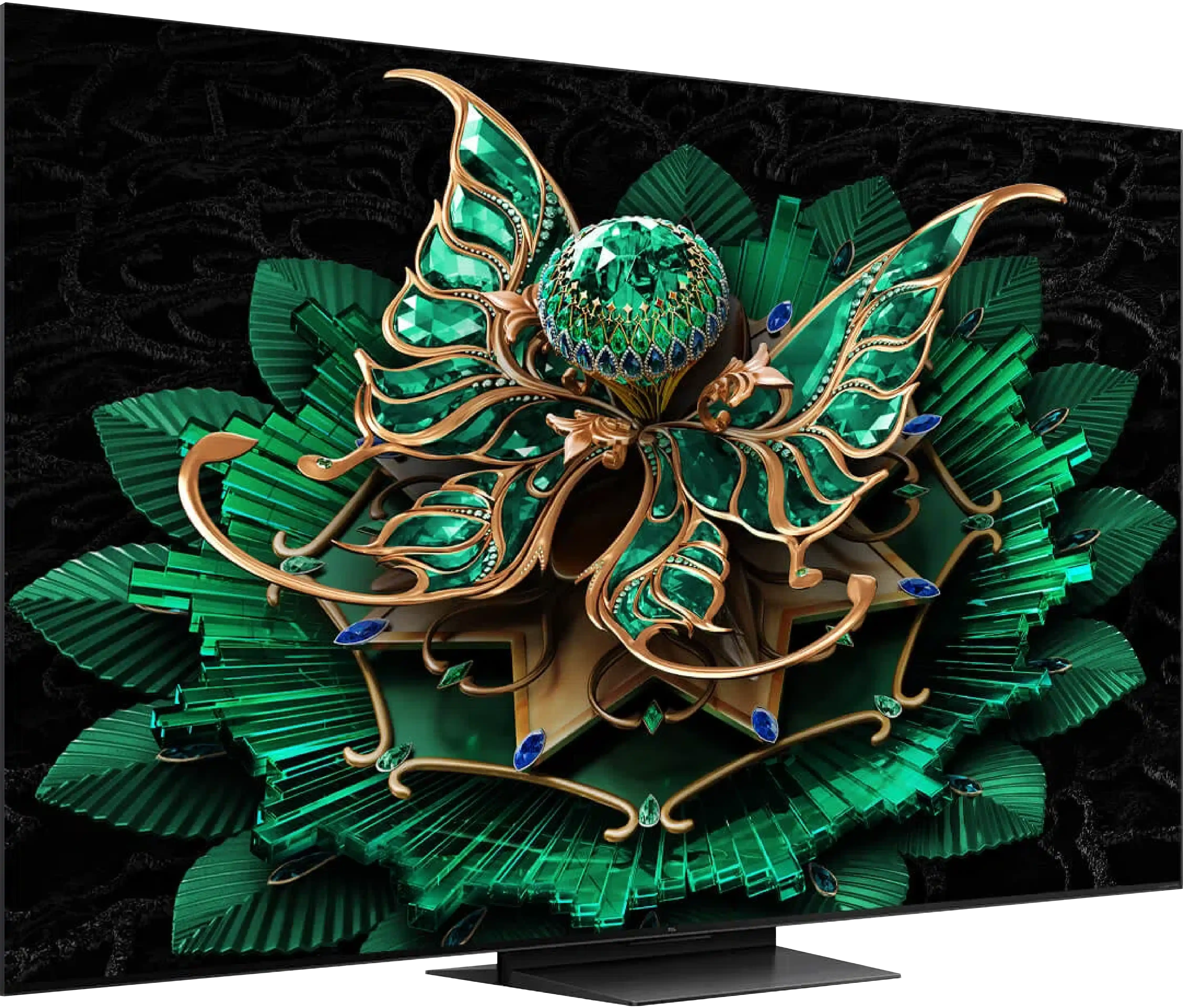

Panel type: LCD VA
Resolution: 3840x2160
System: Google TV
Model year: 2025
Complete the survey to find out the result

Panel type: WRGB OLED
Resolution: 3840x2160
System: Titan OS
Model year: 2025
Complete the survey to find out the result

Overall rating
7.2
7.5
Movies and series in UHD quality
6.7
8.0
Classic TV, YouTube
6.5
8.6
Sports broadcasts (TV and apps)
6.6
8.4
Gaming on console
8.5
9.2
TV as a computer monitor
8.4
7.6
Watching in bright light
6.1
4.8
Utility functions
7.3
5.5
Apps
9.6
6.7
Sound quality
7.0
7.0
Complete the survey to find out what fits your preferences
Advantages
Very good black - VA panel with a large number of Mini-LED zones
High brightness in HDR - over 1000 nits
Great for gamers - HDMI 2.1, low input lag, VRR, ALLM etc.
Good motion fluidity - 144Hz panel
Support for multiple HDR formats: HDR10, HDR10+, Dolby Vision
Google TV operating system with access to a huge app base
Pleasant sound from built-in speakers
Excellent image quality typical of OLED – perfect blacks, infinite contrast
AmblightTV system
Support for multiple HDR formats including Dolby Vision and HDR10+
Great image quality after calibration
Decent viewing angles
Excellent motion smoothness – 120Hz OLED panel!
Many features for gamers: VRR, ALLM, Dolby Vision Gaming
Low input lag
4 HDMI 2.1 ports!
Disadvantages
Google TV can have minor stutters
No USB recording and PiP function
TitanOS has very few apps and has annoying bugs
The remote works on infrared
Not the best upscaling quality
Average reflection suppression – the screen behaves like a slightly dimmed mirror
Our verdict
Philips OLED770 is a television that stands out primarily for its picture quality – the characteristic perfect black and infinite contrast typical of OLEDs make even a regular evening of binge-watching a series feel like a small cinematic experience. After calibration, the colours gain naturalness and consistency, while details in dark scenes are separated from the lights with surgical precision. This is a screen that gives the feeling of engaging with premium-class technology, even though it is formally a budget OLED in Philips' portfolio. The second pillar on which the OLED770 stands very strong is gaming. Here, the manufacturer has really done their homework. VRR works up to 120 Hz, we have an automatic game mode (ALLM), and input lag in standard HDR10 or SDR modes at 120 Hz can drop to as low as 5 ms – these are results that will easily satisfy even the most demanding gamers. And finally, the Ambilight system – for many it’s a gadget, but during longer sessions, it truly makes a difference. The colourful LEDs behind the screen dynamically respond to what's happening in the game, and can pull you deeper into the virtual world. It’s precisely for this reason that one could risk saying that the OLED770 is one of the more interesting budget gaming TVs on the market.
However, not everything shines so brightly, because when we come to the Smart TV aspect… TitanOS is the biggest drawback of this model. Theoretically, we have everything we need: access to apps, AirPlay support, and voice commands. In practice, though, the list of apps is limited, screen mirroring often doesn’t work at all, and voice search does not support the Polish language. Moreover, the remote, although well-designed and backlit – operates on infrared, which sounds almost anachronistic in 2025. The system is purportedly fast, but it can irritate with errors, and instead of encouraging usage, at times, it rather urges us to turn it off. And here we reach the crux: the OLED770 is a television that performs excellently as a screen for movies and games, but not necessarily as a multimedia hub for the home. For someone who mainly uses a console, home cinema, or operator's decoder – it will be a solid choice. We get fantastic picture quality, a full set of modern gaming features, and of course, the proprietary AmbilightTV backlighting system! But if someone is looking for a television that has to replace everything and serve as a multimedia powerhouse, it would be better to look towards the more expensive Philips models that offer more refined system solutions like GoogleTV.
TV appearance
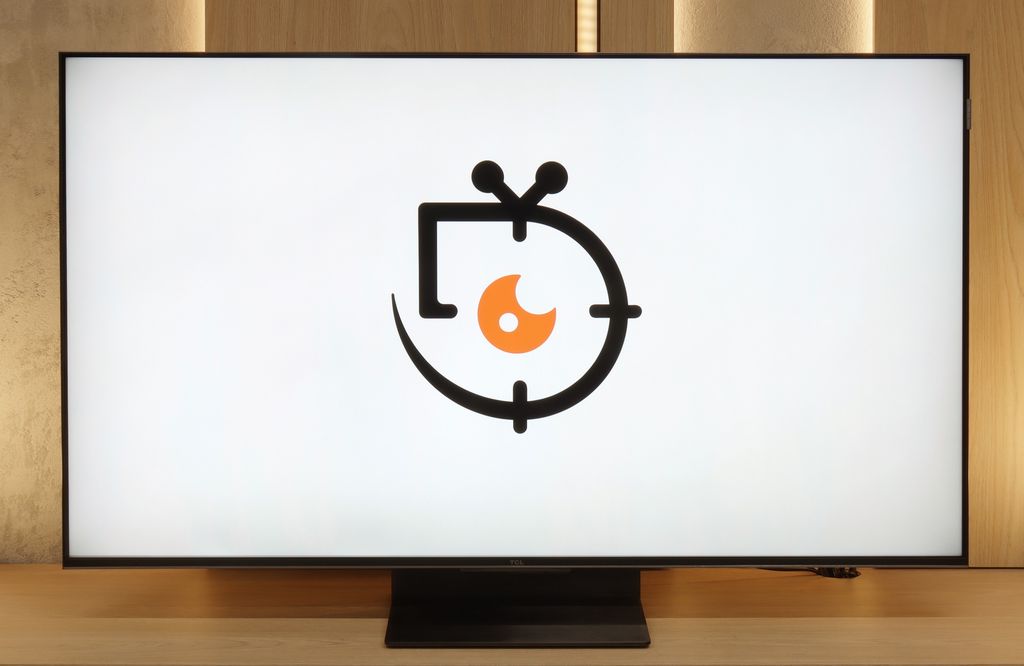
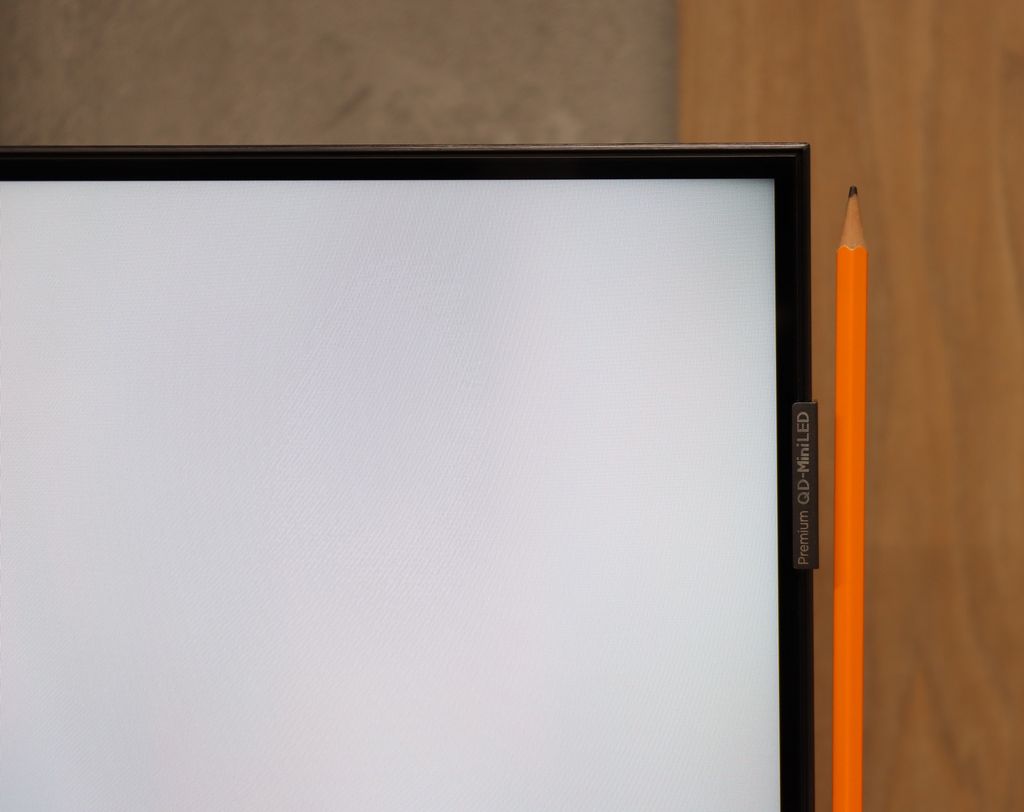
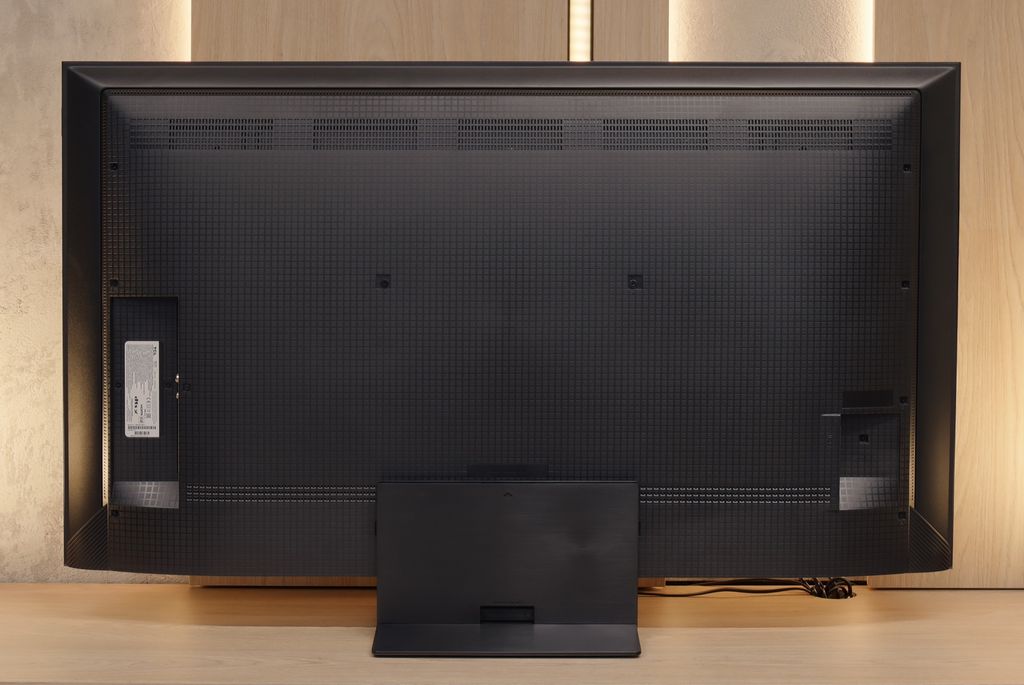
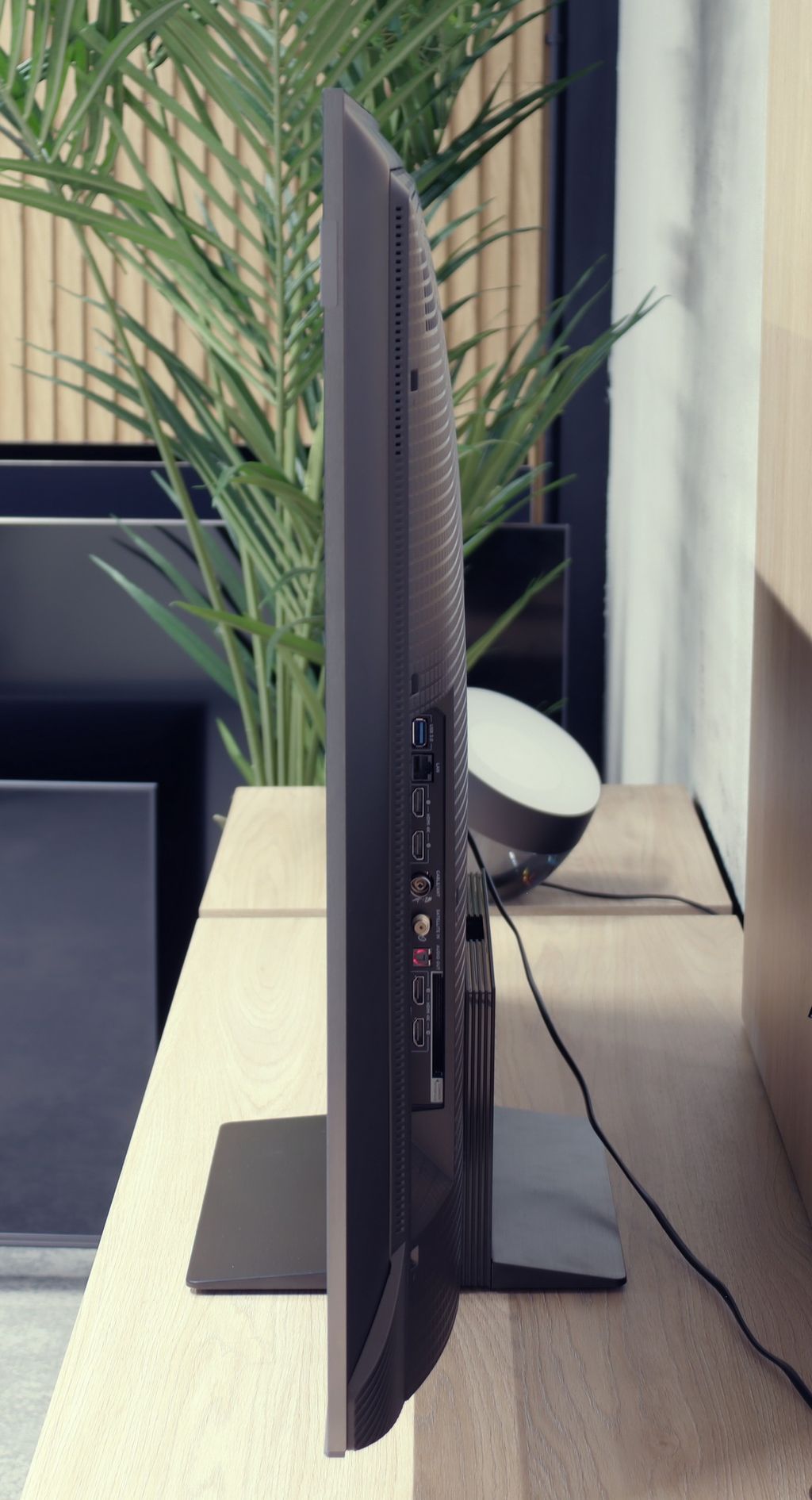




Contrast and black detail
7.1/10
10/10
Local dimming function: Yes, number of zones: 336 (14 x 24)
Contrast:

Result
161,000:1

Result
18,750:1

Result
13,150:1

Result
6,300:1

Result
4,200:1

Result
∞:1

Result
∞:1

Result
∞:1

Result
∞:1

Result
∞:1
Halo effect and black detail visibility:
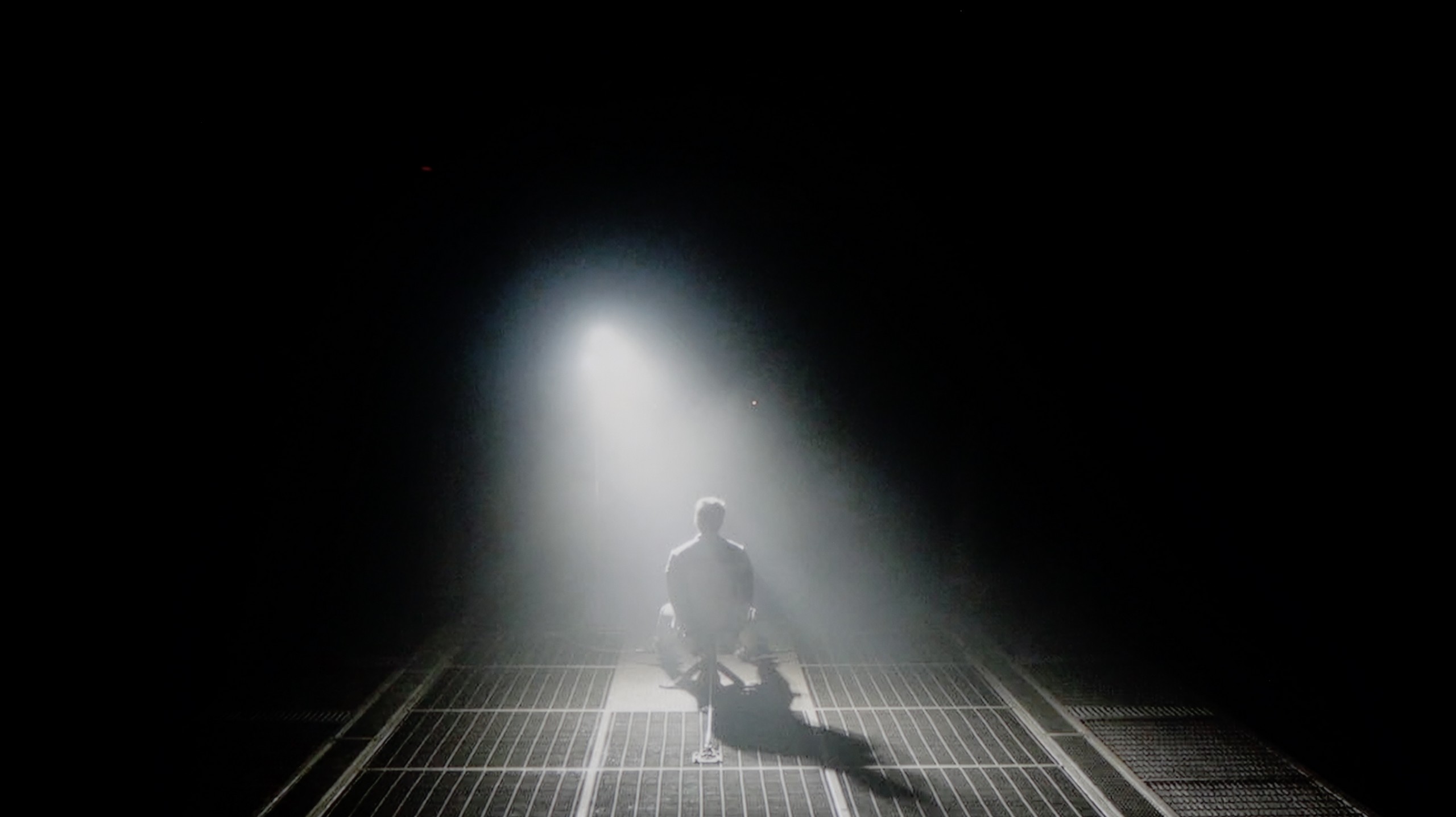

The 50-inch TCL C7K we tested surprised us right from the start – it's the smallest model in the series, yet it's equipped with a VA panel with MiniLED backlighting and – get this – as many as 336 dimming zones. By comparison, many far larger TVs from higher tiers would be happy to boast such a number. Here we have it in a 50-inch version. Sounds promising, right? So how does this translate into real viewing experiences? In the overwhelming majority of tested scenes – very well. The contrast was high enough that in measurements it reached even six-figure values, which in practice means very deep blacks and well-separated highlights. In scenes from films like The Revenant or Oblivion, the effect was impressive, matching the best LCD screens in this class.
Not everything, however, went perfectly. Despite the impressive number of zones, managing them wasn't always exemplary. In more complex scenes, where small light sources or a high level of detail appear, the TV had issues with the so-called halo effect (a glowing aura around bright objects) or overly aggressive dimming of the image. In such situations, contrast could either collapse due to overexposure of some zones or, conversely – details in bright areas vanished because the zones were suppressing light too much. Nevertheless, it's worth emphasising that in the vast majority of scenes the contrast was more than satisfactory. And considering the size of the TV and the price, the final effect will satisfy not only average users.
In terms of black and contrast, the Philips OLED770 doesn’t introduce any revolutions – but with OLEDs, it would be hard to expect one. The organic matrix allows for complete blacking out of individual pixels, which in practice gives us almost perfect black and contrast that reaches infinity. Whether we’re watching night scenes in films or scenes full of tiny bright points, the TV precisely separates details from the background. There are no halo effects or other artifacts typical for LCD TVs with local dimming here. Choosing an OLED – also in the version of model 770 – you can be assured that in this category, the image will look fantastic.
HDR effect quality
5.4/10
6/10
Luminance measurements in HDR:

Result
1051 nit

Result
185 nit

Result
454 nit

Result
200 nit

Result
836 nit

Result
546 nit

Result
657 nit

Result
726 nit

Result
704 nit

Result
275 nit
Scene from the movie “Pan” (about 2800 nits)


Scene from the movie “Billy Lynn” (about 1100 nits)


Static HDR10


Dynamic: Dolby Vision
Dynamic: Dolby Vision


HDR luminance chart:
Philips OLED770
HDR luminance
Luminance of RGB colors
TCL C7K / QM7K
HDR luminance
TCL C7K is one of the brightest MiniLED TVs in its price class. Under optimal testing conditions, the screen can achieve over 1200 nits, resulting in impressive, at times dazzlingly bright scenes. And most importantly – this isn’t just a theory from measurements. In practice, even the brightest moments in movies can shine with true cinematic grandeur. Home HDR cinema fans should be really pleased.
The impression is fantastic, especially in scenes with large areas of brightness – a white sky, explosions, sun reflections, or magical sunsets can surprise with an intensity of light that rarely appears in this price range.
However, things get a bit worse when more challenging scenarios appear on the screen, previously described in terms of contrast – that is, images full of details, with small bright elements on a dark background. In such cases, the C7K often opts to preserve black at the expense of brightness. An example? Scenes from movies like Sicario 2 or Life of Pi, where small light sources (like a distant lantern) may become less visible, and details in the lights are simply dimmed or blend into the background.
For many viewers, this may be an acceptable compromise – as we achieve deep blacks and pleasant image depth. Nevertheless, it’s important to recognise that the visibility of small details in bright areas is not this model's strong suit. It’s simply a technological limitation that still exists – even with over 300 zones.
The Philips OLED770 doesn't try to compete with the brightest OLEDs on the market, and it's actually hard to expect that, as it's the entry-level model in Philips' range for 2025. In our measurements, it reached a maximum of around 700 nits, which allows for enjoyment of HDR effects in scenes where light appears in spots – for instance, in the flash of headlights or a starry sky. In such moments, the picture can truly amaze. However, it's different when there are more bright elements on the screen. The TV, like many cheaper OLEDs, restricts luminance at that point, and the entire image noticeably dims. This was best seen in a scene from the movie The Meg, where the sun rises behind an oil platform – the brightness dropped to around 250 nits, which is almost three times less. The HDR effect remains pleasing to the eye, but it's worth being aware that this model performs best in scenes with less intense light. Fortunately, the OLED770 also has an ace up its sleeve – the coverage of the DCI-P3 colour palette is as high as 99%, so colours in movies and games are vibrant and very close to what the creator intended.
Factory color reproduction
6/10
6.2/10
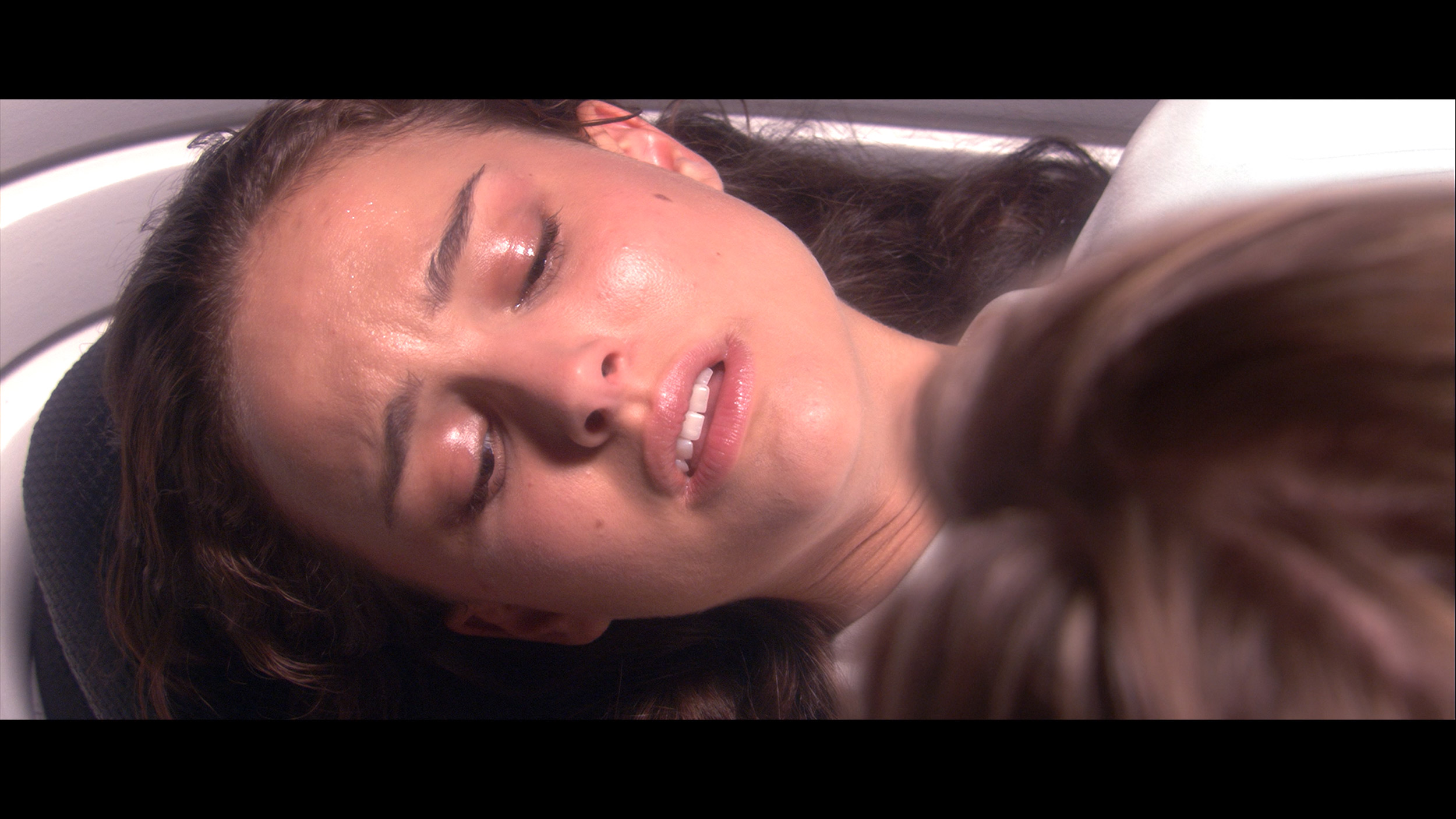
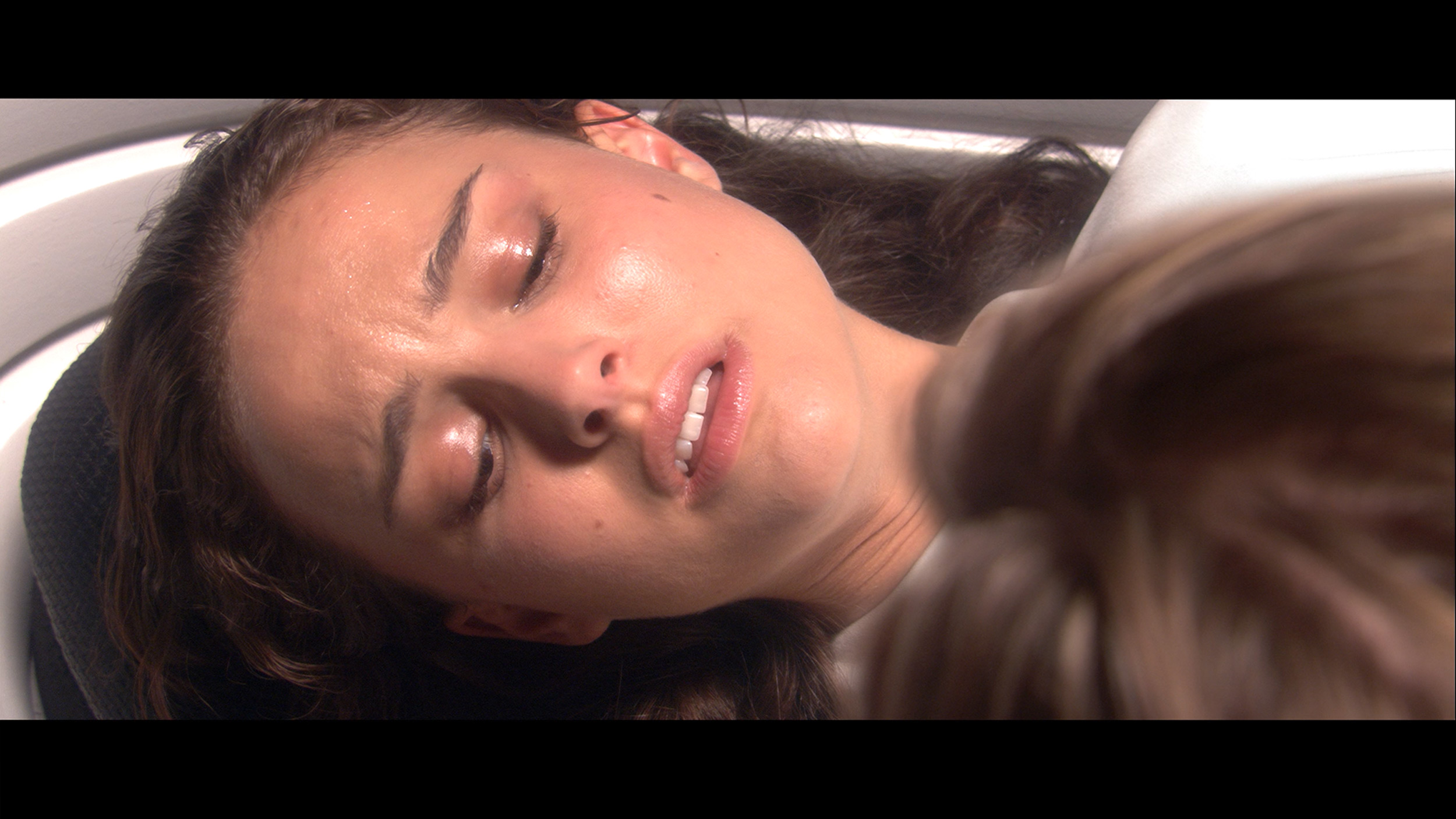
Factory Mode
After calibration


Factory Mode
After calibration
A new feature in TCL televisions for 2025 is the long-awaited Filmmaker mode, which until now has been found in most competing brands. This is great news, as this mode is considered the most faithful to the original vision of the creators and is often recommended by enthusiasts of quality visuals. Unfortunately – as is often the case – the mere presence of it does not guarantee perfection. The Filmmaker mode in the TCL C7K is not without its faults. There are issues with inaccurate white balance, particularly a slight blue tint that resulted in cool, somewhat greyish skin tones. But that wasn’t the biggest problem. The main complaint was excessive brightness exposure, which is clearly visible on gamma and EOTF charts. The image was simply too bright, at times even blown out, which affected not only the texture of scenes but also the overall viewing experience. Some details were just lost, and the entire image looked as if someone had overdone the brightness slider. As always, we decided to see what could be squeezed out of it after calibration. And this is where things started to get really interesting…
The first measurements already show that the factory settings of the Philips OLED770 have a lot to improve, even in Filmmaker mode. The white balance chart clearly indicates a lack of blue, giving the image a slightly yellowish tint. In practice, white is not snow-like, but leans towards warmer hues – which some may even find appealing, but from a precision standpoint, this is a deviation from the norm. The gamma, on the other hand, tends to be on the darker side – the average value is around 2.6 instead of the reference 2.4. In mid-tones, the image appears muted and more saturated, which can look too "cinematic" but detracts a bit from the naturalness. However, the most significant issues are visible in colour reproduction. The average error is relatively high, and some colours – particularly shades of grey – deviate significantly from what should be seen. In everyday viewing, this means that sometimes colours may look less natural than we would wish.
Color reproduction after calibration
7.5/10
9/10




After calibration, the TCL C7K showed itself in a really good light, especially when it comes to SDR content. We managed to precisely tune the white balance, colour gamut, and brightness characteristics so that the colour errors on the ColorChecker palette fell below a value of 2. For the uninitiated – this is nearly a perfect result, which means that the image is very close to what the creators intended. Unfortunately, it was a different story with 4K HDR content. While we were able to slightly calm down the white balance and correct its earlier errors, it was still evident that the TV has some "MiniLED traits", particularly in brightness management. When we checked how the C7K handled the EOTF curve on real film scenes, rather than just on synthetic test patterns, it turned out that the screen still had a tendency to slightly brighten the entire image. This affects the overall experience – the black loses some depth, and the image becomes less contrasty than it should be. Despite these minor issues with HDR content, the overall reception of materials – especially in SDR – is really very good. After calibration, the C7K can display an image that can successfully compete with much more expensive models. Good colour tuning, natural skin tones, and pleasant brightness make movie watching and everyday content viewing more than satisfactory.
Philips OLED770 had shown signs from the start that it harboured significant potential, but it was hard to fully appreciate this in its factory settings. The image was often too warm, and some colours appeared as if they had lost their naturalness along the way. Calibration revealed that this television was very amenable to work – it responded to every adjustment and almost immediately unveiled another layer of its capabilities. The white balance was set in both SDR and HDR so that the yellowish haze disappeared and a neutral, clear white emerged. Gamma stabilised closer to perfection, which helped restore the naturalness of mid-tones, while shadows ceased to be artificially darkened, perhaps even with a slight brightening effect. The result was obvious... Movies are watched with greater ease; the image has cinematic depth without the feeling that something is overly darkened. However, the most interesting aspect was working on the colours. Factory errors were not dramatic, but slightly noticeable – skin tones could be too warm, and grey wasn’t always the shade we expected. After calibration, the error values dropped to around 2, and in many cases even below 1. This is a level that is definitely lower than the threshold of discernibility for the human eye. In other words, after correction, the colours finally “clicked” into place. Looking at the screen, we felt like the television had begun to speak with a full voice. Like an instrument that had finally been properly tuned.
Smoothness of tonal transitions
8.6/10
7.6/10












The TCL C7K performs very well with colour gradation – in most of the scenes tested, tonal transitions were smooth, and colours blended together without visible outlines or the artificial effect of "blotches". In everyday use, it's hard to find any faults – the picture looks natural, without jarring transitions or digital artifacts. Certain limitations only appear in very dark tones – especially in a heavily muted grey palette, where the television may struggle to reproduce the ideal gradation. But that’s absolutely understandable, as even many significantly more expensive models in this range simply can't cope. Fortunately, these situations are rare and don’t really affect the overall perception.
In this category, there’s a noticeable improvement compared to last year's Philips models. The OLED770 handles colour gradation significantly better, and strongly visible transitions or artificial banding occur less frequently than before. Interestingly, we achieved the best results in dark scenes – where most televisions, especially those with WOLED panels, tend to struggle the most. A good example is the shot of an actor floating in red water – the transition from intense red to black looks nearly perfect here, without the typical “stair steps.” The situation is somewhat worse in light parts of the image. With extremely bright gradients, particularly close to white, the television has trouble maintaining smoothness. This can be noticed, for example, in a scene from the film Kingsman, where in the background of the bright sky with the sun, subtle bands of the sunrise appear instead of a smooth blur. Fortunately, these situations are relatively rare, and in everyday viewing, the OLED770 presents itself very solidly and doesn’t disrupt immersion as was the case in last year's models.
Image scaling and smoothness of tonal transitions
5.5/10
7/10
Smooth transition function
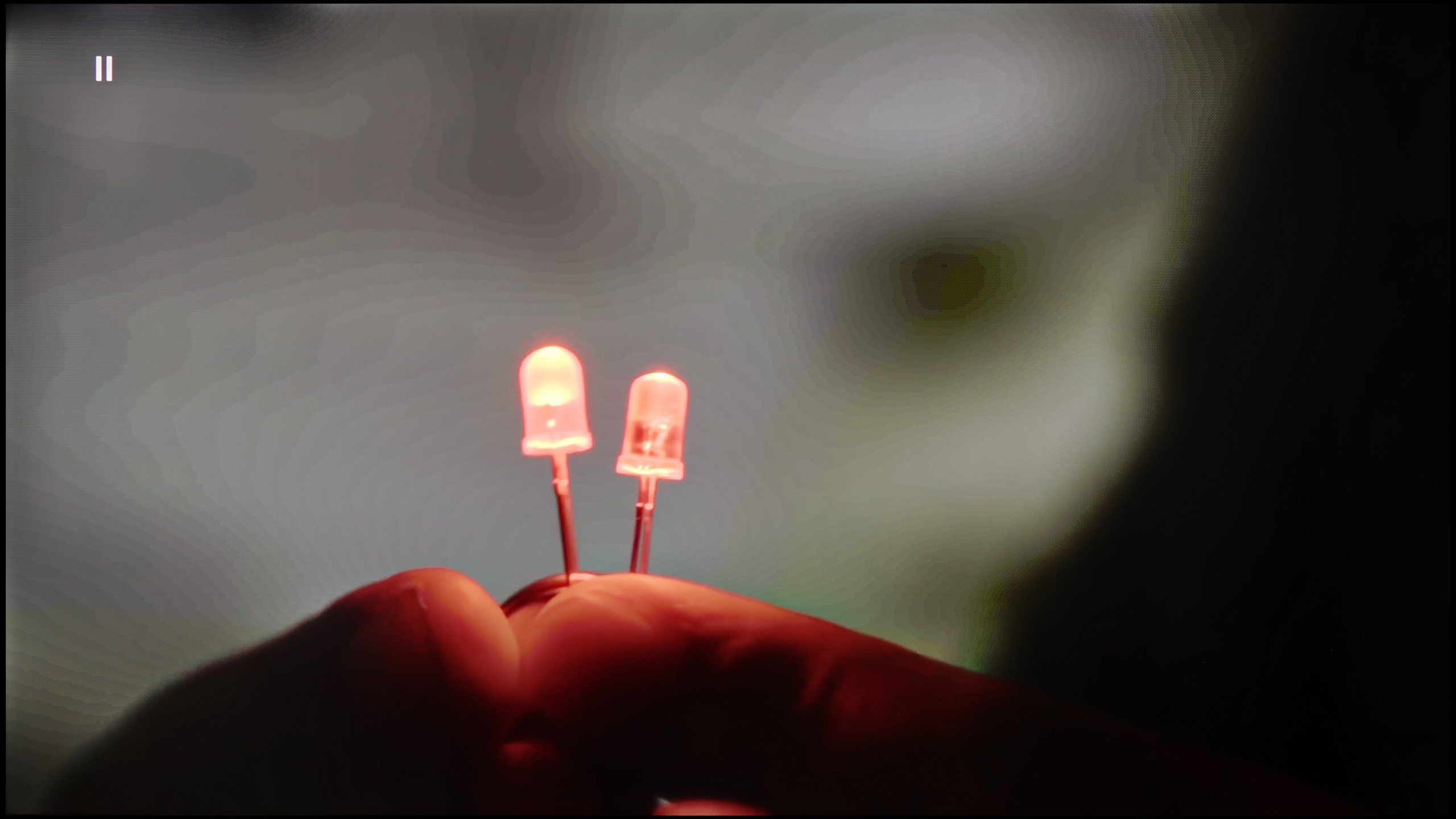

Image without overscan on the SD signal


TCL C7K has a feature that, according to the manufacturer, is meant to smooth out undesirable colour transitions – something like a rescue for less successful tonal shifts. It's called "Gradual Smoothing," and... well, it sounds ambitious, but in practice, it works very poorly. Regardless of whether we set it to low or high, the difference is minimal. Worse still – the feature can cut out elements from the image that should remain. Fortunately, film grain remains untouched, so at least it doesn't smooth everything indiscriminately, but even so – it's better to simply turn this option off.
When it comes to upscaling lower resolution content, it's already better. SD and HD materials look quite decent, although at times we had the impression that the image loses sharpness and becomes too soft – as if something took away its clarity. Fortunately, with very low sources (e.g., 576p), there was no overscan effect, meaning the image wasn't artificially cropped – everything fit on the screen as it should.
The problem of the previously mentioned colour connections can largely be mitigated thanks to the "distortion reduction" function, which is an algorithm for smoothing tonal transitions in Philips. It works best at a low level – effectively eliminating unwanted colour bands while not introducing strange artifacts or losing image detail. This is one of those features that is truly worth keeping on.
The issue of upscaling is somewhat less impressive. Images from lower resolution can be too soft, while in some parts the characteristic "jaggies" appear. The impression is that the algorithm is trying to reconcile two contradictory directions – smoothing and sharpening – and ultimately fails to find the golden mean. As a consolation, it's worth noting that the television does not have problems with overscan, meaning it does not cut off the edges of the image, which can sometimes happen in other competing models.
Blur and motion smoothness
8.1/10
8.4/10
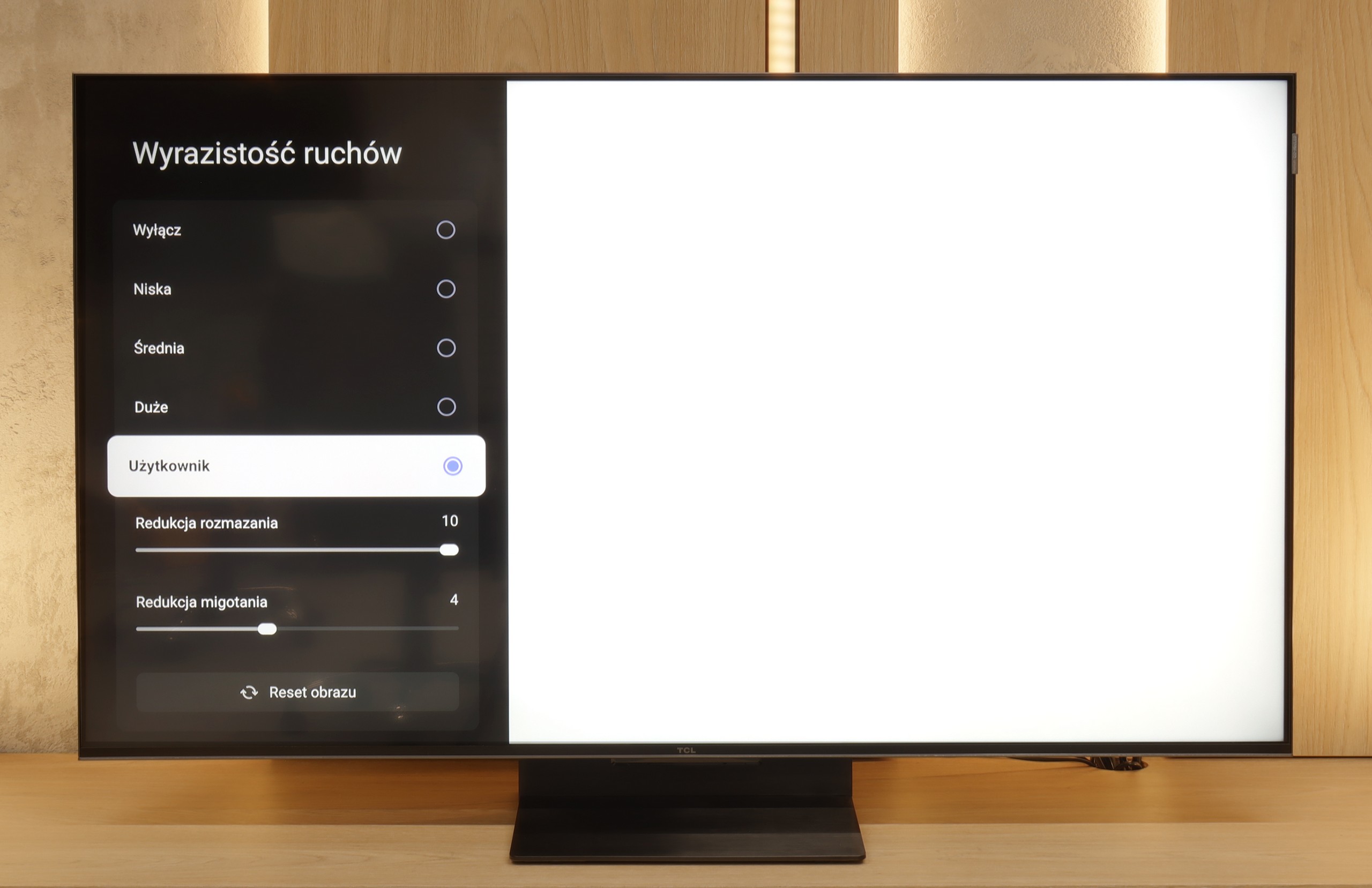

Blur (native resolution, maximum refresh rate):


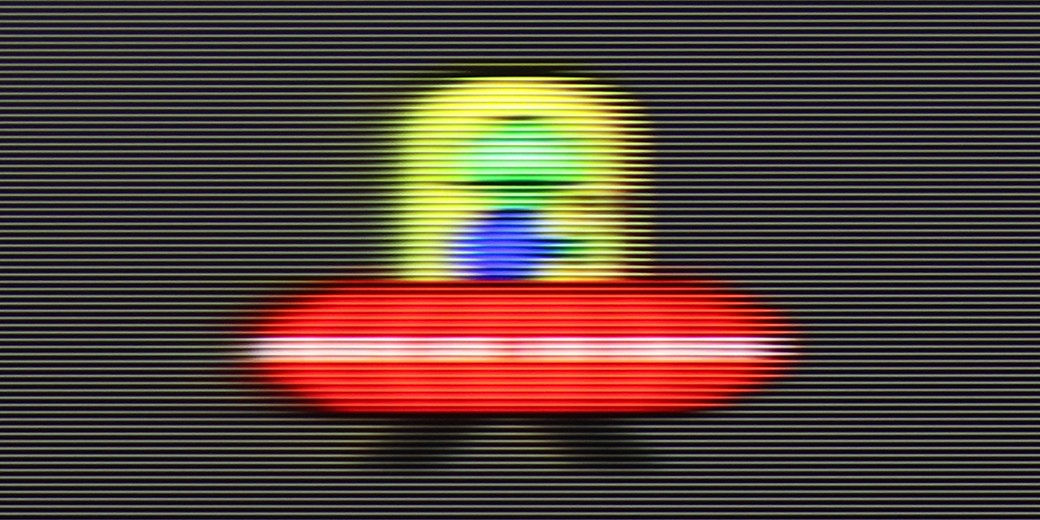



Blur (BFI function enabled):



Smużenie (4K 144Hz):



Smużenie (4K@144Hz):



TCL C7K handles motion fluidity really well. The panel it uses offers a refresh rate of 144 Hz, which suggests that this TV is more than just a standard "60 Hz" panel. Furthermore, if we connect the C7K to a computer and set the resolution to Full HD. But we will write more about this in the paragraph on gamers and PC compatibility. Returning to everyday use – both sports and movies look very good here. Thanks to the fast panel and the well-functioning motion smoother, the C7K is great for watching matches, but also for movie screenings. In the menu, we find two sliders – motion blur reduction and flicker reduction – that allow you to adjust the fluidity effect to your own preferences. At lower settings, we get a more cinematic effect, with slight judder. At higher settings – the image becomes more theatrical, fluid to the point of excess. Whatever your preference – everyone can set it their own way.
The issue of the panel in the Philips OLED770 is not entirely straightforward. The manufacturer claims a 120 Hz panel, but our measurements showed that the screen can accept a 4K signal even at 144 Hz. This sounds like great news – because who wouldn't want an additional mode for PC gamers at this price? However, the reality turned out to be more complex. With 120 Hz content, the television behaves like most OLEDs – the image is absolutely clear, with no trace of blurring or smearing, ideal for both dynamic games and sports broadcasts. The problem only arises at 144 Hz. Unlike models with official support for this frequency, here we see the phenomenon of so-called frame skipping. This means that the television is unable to display all the frames – some of them are skipped, causing motion to lose smoothness and double outlines to appear on the screen. The effect resembles the operation of the BFI function, which Philips does not offer in this model anyway.
Console compatibility and gaming features
9.8/10
10/10
- ALLM
- VRR
- VRR range48 - 144Hz40 - 120Hz
- Dolby Vision Game Mode
- Correct implementation of HGIG
- 1080p@120Hz
- 1440p@120Hz
- 4K@120Hz
- Game bar
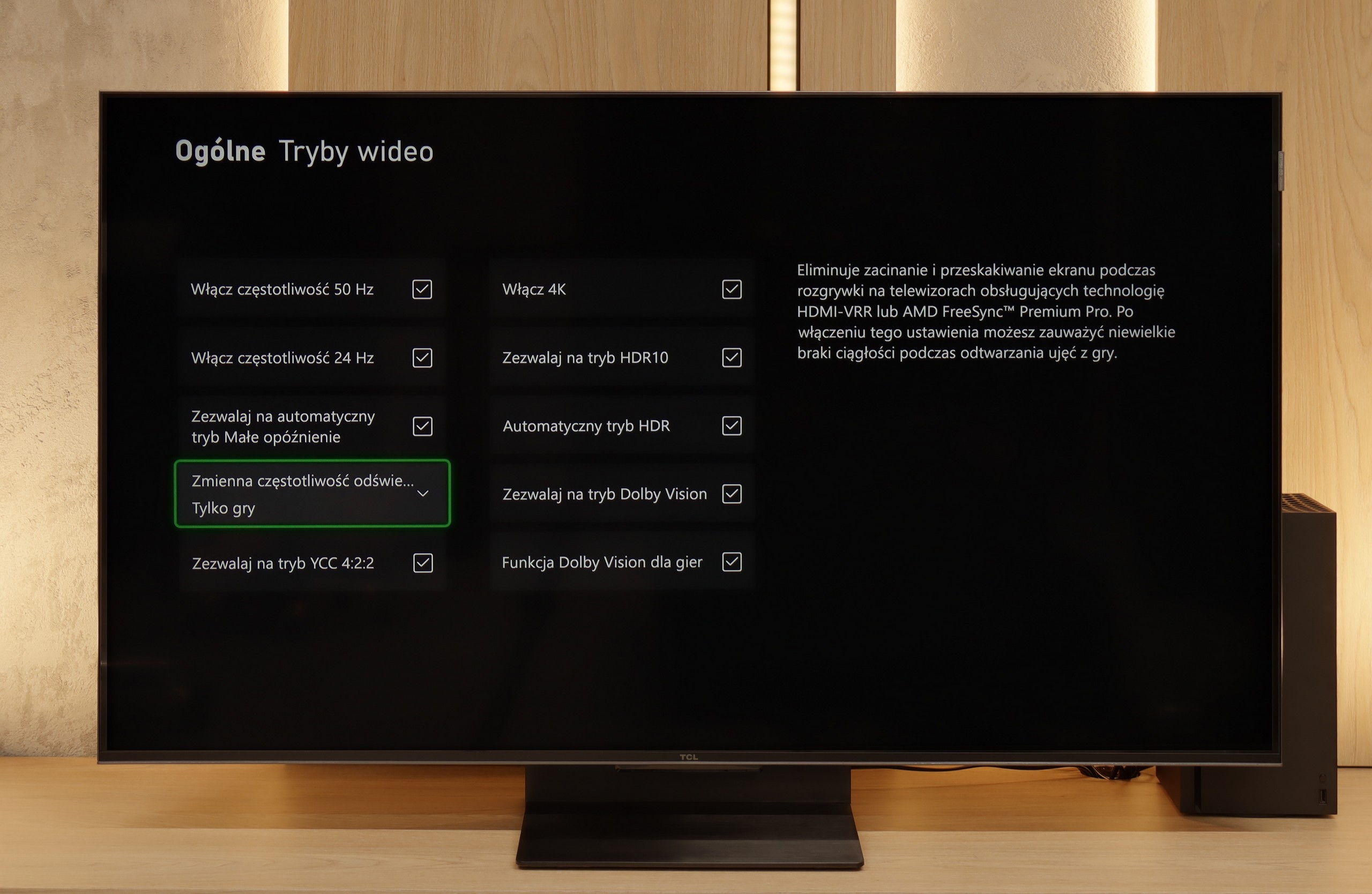

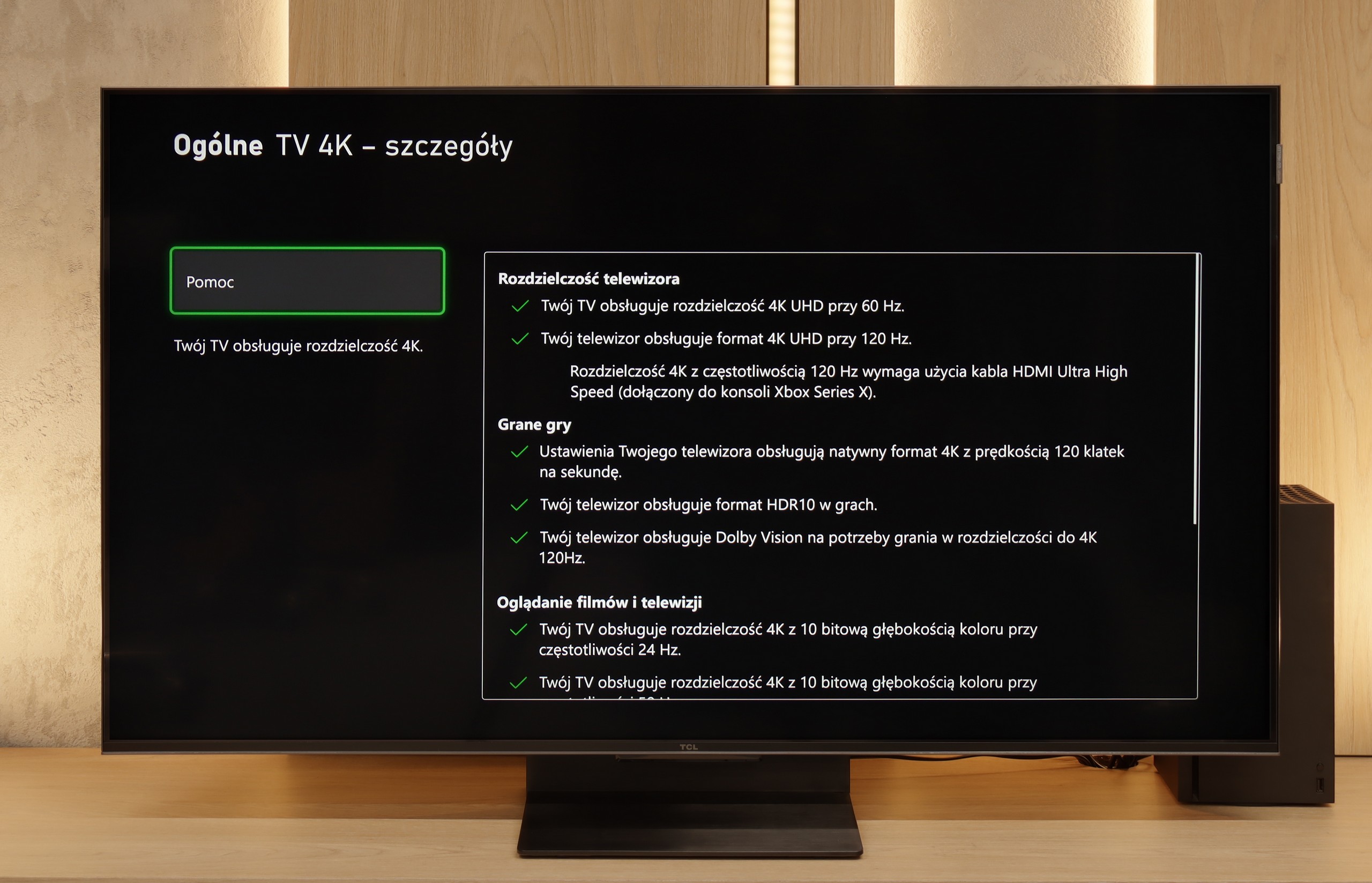

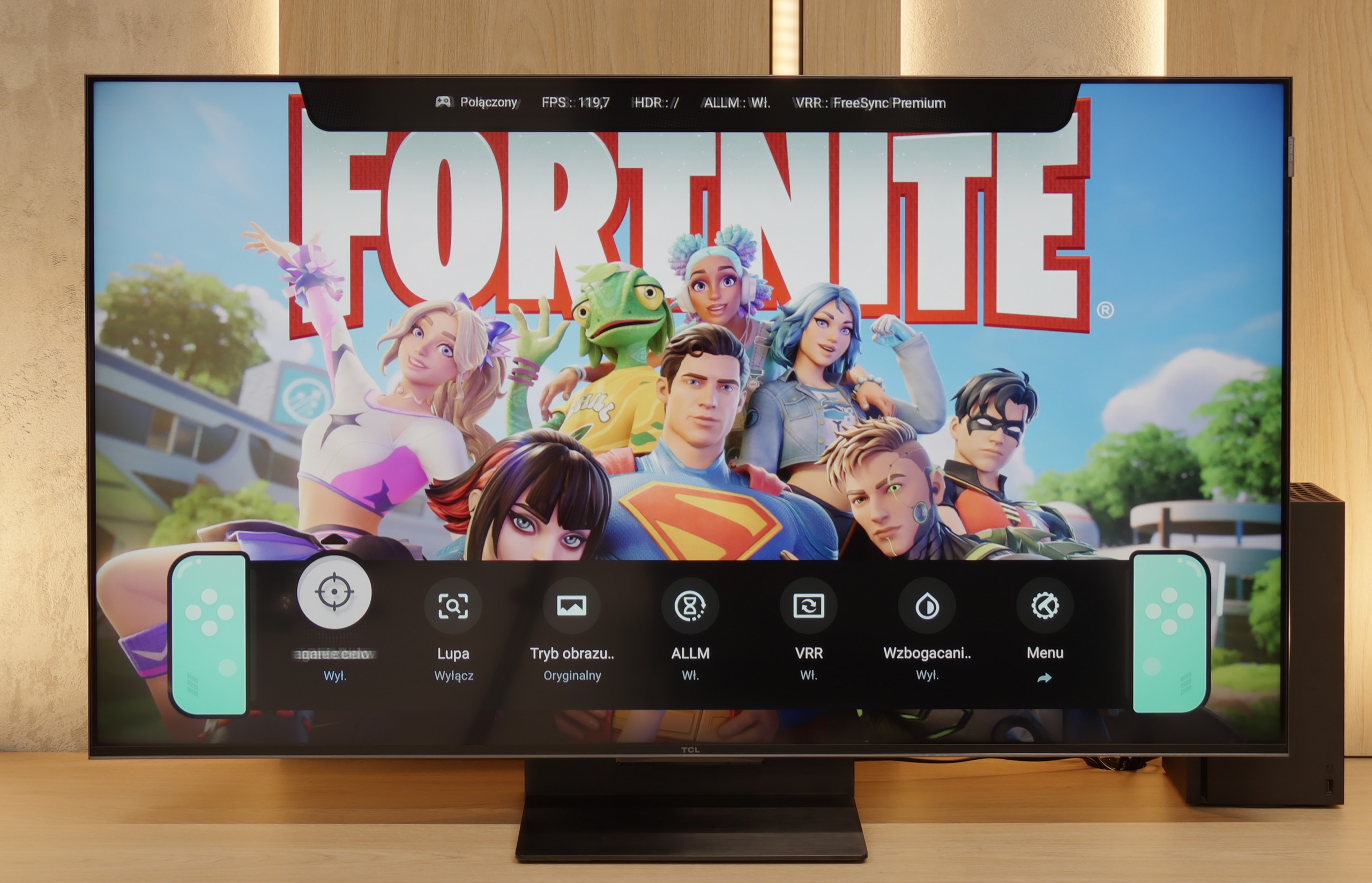

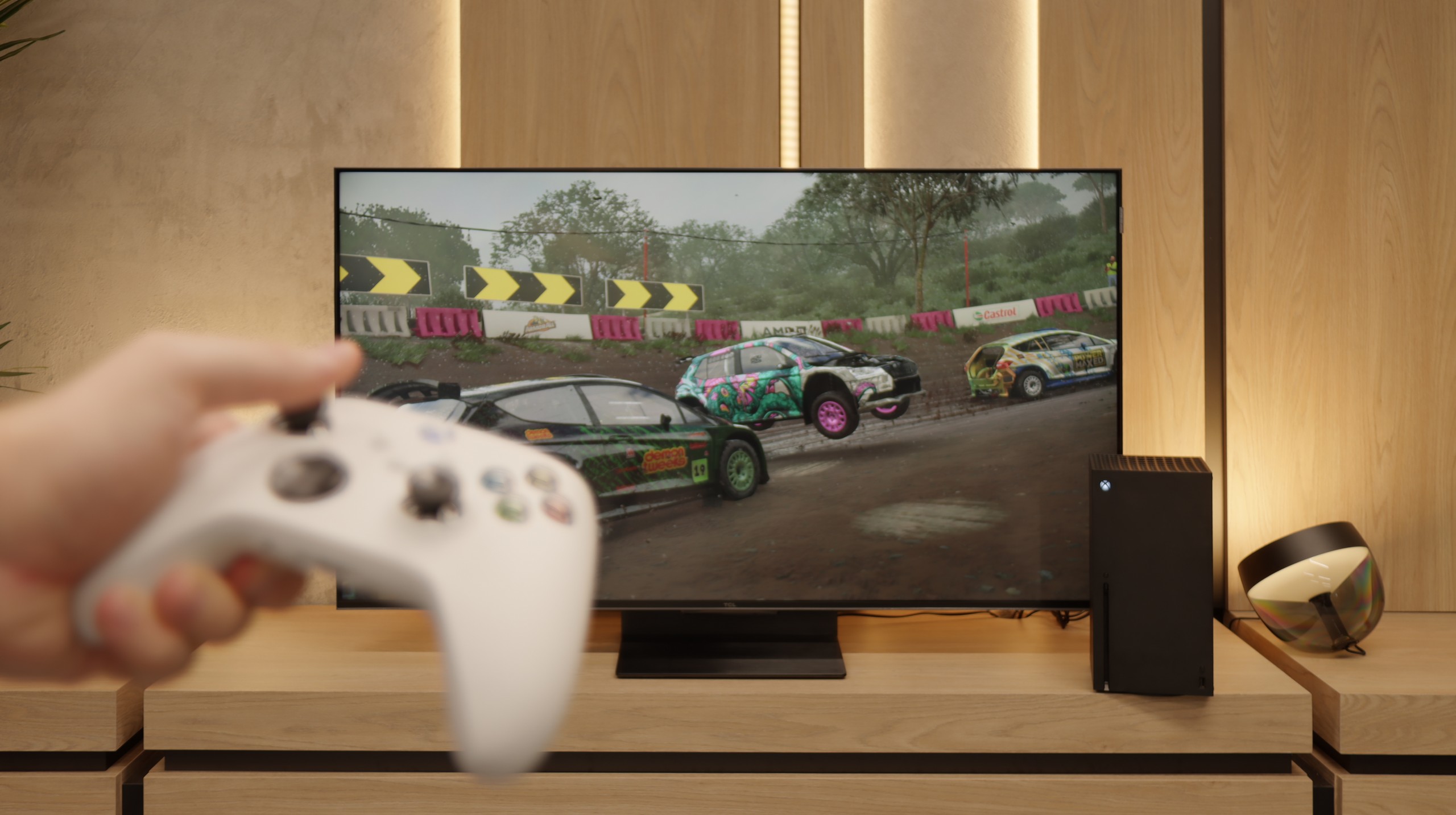

TCL C7K is a television that on paper looks like the perfect equipment for gamers – and most importantly, it performs well in practice too. Here's some good news: we have two full-bandwidth HDMI 2.1 ports, so we can easily connect both a console and a computer, using all their capabilities. The panel itself supports a refresh rate of 144 Hz, which provides a significant advantage in dynamic games. Additionally, it comes with a full set of gaming features: VRR (variable refresh rate), ALLM (automatic low latency mode), and support for Dolby Vision in games. There's also an HGiG mode that allows for HDR effects that align with the creators' intentions. GameBar, which is an information bar for gamers. It operates quickly, looks clear (like a Nintendo console👌), and shows what's most important: the current frame rate, VRR status, and even HDR parameters.
If someone is looking for a TV for gaming, the Philips OLED770 is a candidate that's hard to overlook. The mere fact that this is an OLED gives it a great starting point – perfect blacks and infinite contrast make evening sessions in atmospheric games look like they've been taken straight out of a cinema. Added to that is the Ambilight system, which uses LEDs on the back of the TV to extend the image onto the wall behind the screen. The effect is such that even just playing FIFA can look like a small spectacle, and in horror games, the atmosphere becomes really thick. On the technical side, it's also quite decent. The Philips OLED770 supports variable refresh rate (VRR) up to 120 Hz, has an automatic mode for gamers (ALLM), and for those using an Xbox Series X, Dolby Vision support in games is also available. You just need to know that in this mode, the input lag is slightly higher than standard, although still at an acceptable level. As a bonus, we also get the 'Game Bar', which is a special tool strip for gamers. It's not the most conveniently designed solution, but it allows for a quick view of key parameters without exiting the game. Overall, this gives a picture of a TV that has all the most important gaming features on one hand, and on the other can add something unique – Ambilight. And it's this mix of technology and visual effect that makes the OLED770 one of the better screens for gaming in a home environment.
Input lag
9.7/10
9.8/10
SDR
HDR
Dolby Vision
When it comes to delays, the C7K gives no reasons to complain. In games at 120 Hz, the input lag is around 10 ms, which means that the TV responds really quickly. Interestingly, even in Dolby Vision mode, the result is very similar, which isn't always the case. Good job, TCL. At 60 Hz, the lag does increase a bit, but that's completely normal and applies to pretty much every TV with a refresh rate of 120Hz and above. The most important thing is that everything still runs smoothly and there's no feeling that something isn't responding to our actions.
As we mentioned earlier, the only anomaly that has been captured during testing is the Dolby Vision Gaming mode. In this setting, the latency can reach up to 30 ms. This is not a particularly impressive result, and more demanding players may turn up their noses, but in practice – during casual sessions – the difference will not be greatly noticeable. The standard HDR10 and SDR modes perform much better, however. In the case of a 120 Hz signal, the input lag drops to a minimal 5 ms, which is an outstanding result and places the OLED770 among the top TVs suitable for dynamic gaming. In other words, if someone isn’t set on Dolby Vision on Xbox, the gaming experience will be fast, smooth, and free of unnecessary delays!
Compatibility with PC
8.4/10
7.6/10
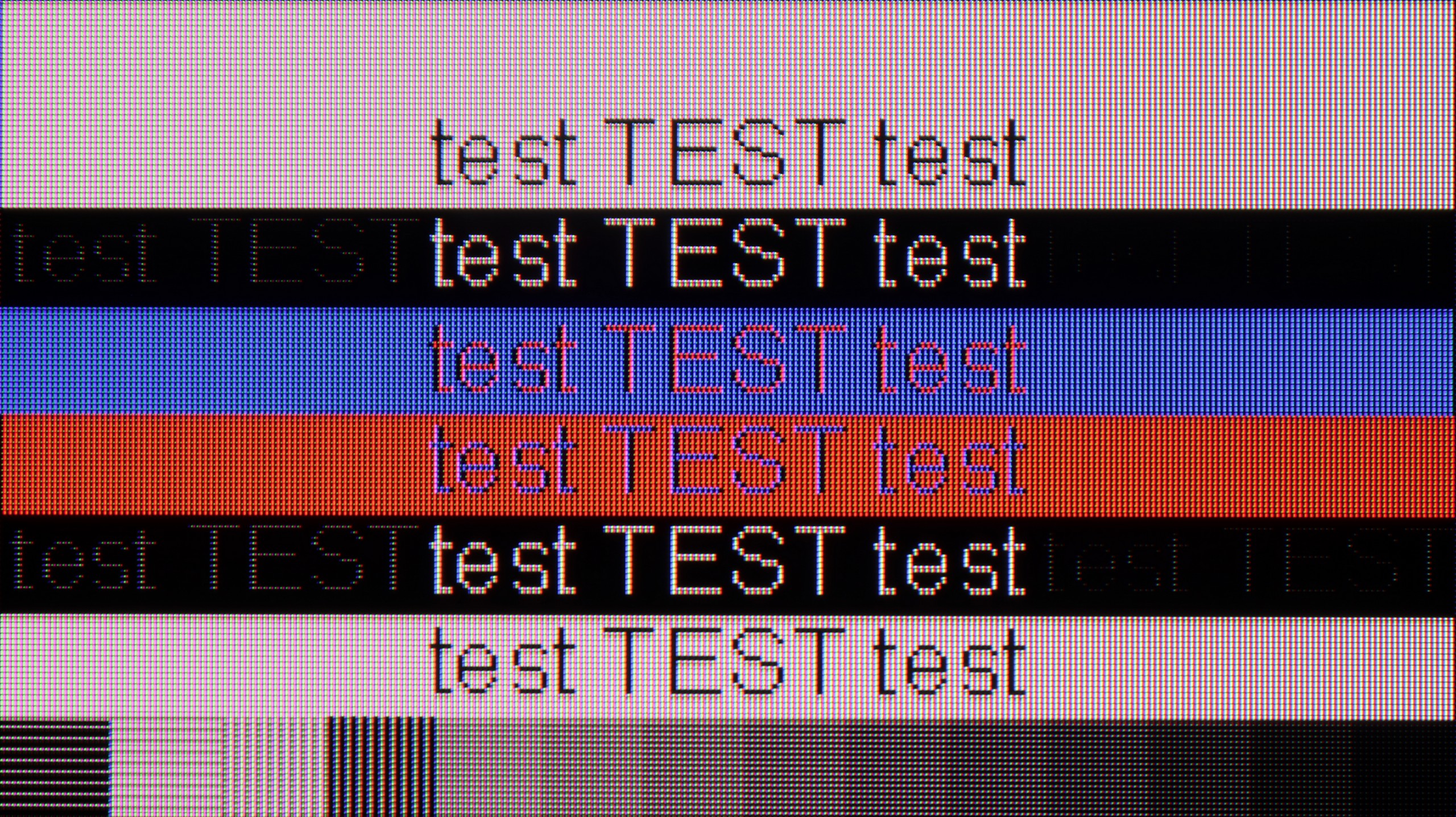

If we plan to connect the C7K to a computer – especially for gaming – there's definitely a lot to play with. We have 4K at 144 Hz, which already sounds great, but if we drop the resolution, the TV can even display 280 Hz. In e-sports, where every split second counts, this really makes a difference. On top of that, it supports G-Sync and FreeSync, so no matter what graphics card we have – the image will be smooth, with no stuttering or tearing.
But if we plan to put the C7K on a desk and use it like a monitor, it's a bit less "rosy." Sure, it supports chroma 4:4:4, so fonts should be sharp, but with very dark letters, you can notice slight blurriness and edge dimming. It's not something that immediately stands out during gaming or watching, but when working with text – it can be distracting. In everyday use – relatively worry-free, but if we plan to have a 50-inch screen a metre from our face, it's worth keeping this in mind.
Philips has learned from previous models and has finally improved the implementation of chroma 4:4:4. This is important news for those planning to connect the TV to a computer, as it means no problems with sharpness and readability of fonts. Text looks clear and crisp, so the OLED770 can easily be called an excellent display for office work or browsing the internet. Of course, very demanding users may notice some imperfections resulting from the WRGB pixel arrangement typical of WOLED panels, but in practice, this does not significantly impact comfort. The TV also performs well in games launched from a PC. The panel allows for real refresh rates of up to 120 Hz, and with low input lag, this provides a very smooth image without noticeable stutters. The only thing missing is support for G-Sync and – as we mentioned before – a proper 144 Hz mode, but despite that, the overall performance is really solid. For those looking for a versatile screen for computer and console use, the OLED770 is a choice that’s hard to underestimate.
Viewing angles
3/10
7.7/10
There's no surprise here – the C7K has classic viewing angles for a VA panel. That is: we sit directly in front – it's excellent. Colours look good, contrast is strong, everything is in place. But just shifting slightly to the side starts to make things worse – the image loses saturation, the blacks turn grey, and the overall impression diminishes a bit. So if we plan to watch together with a few people or have a sofa that takes up half the lounge – it’s worth seating everyone more centrally. You can watch from the side, but don’t expect miracles – it’s simply a characteristic of the VA panel.
In terms of viewing angles, the Philips OLED770 presents a very high level typical of OLEDs. The image remains readable and saturated even when viewing the screen from the side – there is practically no drop in contrast or fading of colours. In this category, it only falls short of QD-OLED panels, which we find either in very expensive premium models or in one exceptional case – in the 55-inch Samsung S85F. However, in everyday use, the differences are difficult to detect, and the OLED770 performs nearly perfectly. Only at really extreme angles can a slight degradation of colours be noticed.
TV efficiency during daytime
6.1/10
4.8/10
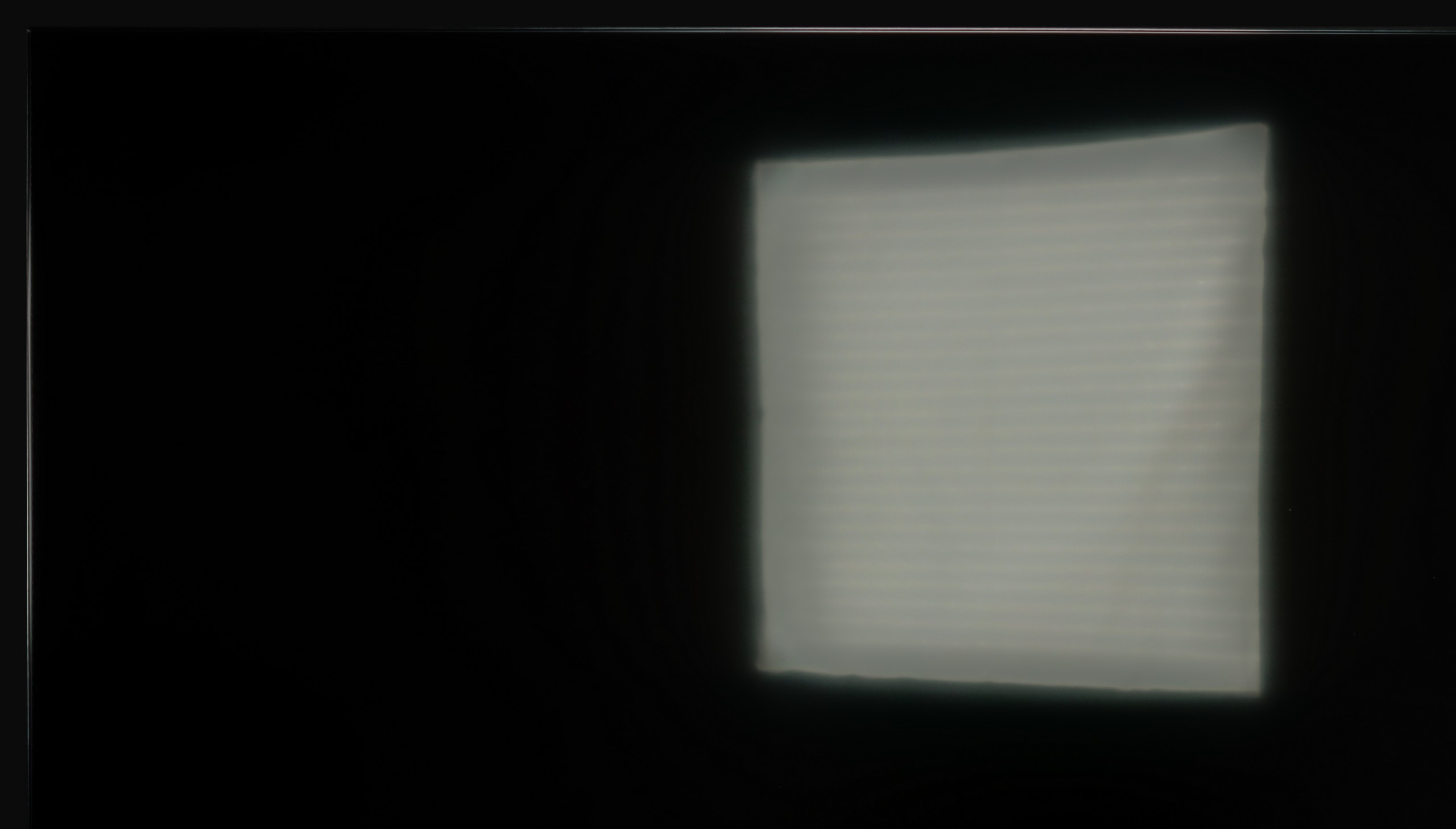



Matrix brightness
Average luminance SDR
Philips OLED770: 249 cd/m2
TCL C7K / QM7K: 475 cd/m2
Luckily, the TCL C7K performs quite well in bright rooms. The applied panel has a satin finish that effectively reduces reflections, so even on sunny days we don't have to worry about reflections from lamps or windows. Importantly, the colours maintain their intensity and don't wash out, as can happen with weaker matte panels. As for brightness, the average for content like YouTube or regular television reaches just below 500 nits. It's not a record result – for example, the MQLED85 (C765) performs better in this regard. However, for everyday viewing during the day, it should work without major issues, as long as we don't plan to place it opposite a south-facing window without curtains.
OLED770 is not one of the brightest TVs, so it's hard to recommend it for very sun-filled living rooms. In a bright room, its limitations quickly become apparent – the screen catches reflections and behaves more like a lightly dimmed mirror. Glare reduction is average, and in direct light, the screen performs poorly. Fortunately, the panel's coating does not distort colours, so even during the day, the hues remain natural, and the blacks do not dramatically lose their depth. Nevertheless, it’s hard to say that the OLED770 is a TV designed for bright spaces – it will definitely find a better home in a dimly lit living room or in a bedroom, where its strengths can truly shine.
Details about the matrix
Subpixel Structure:
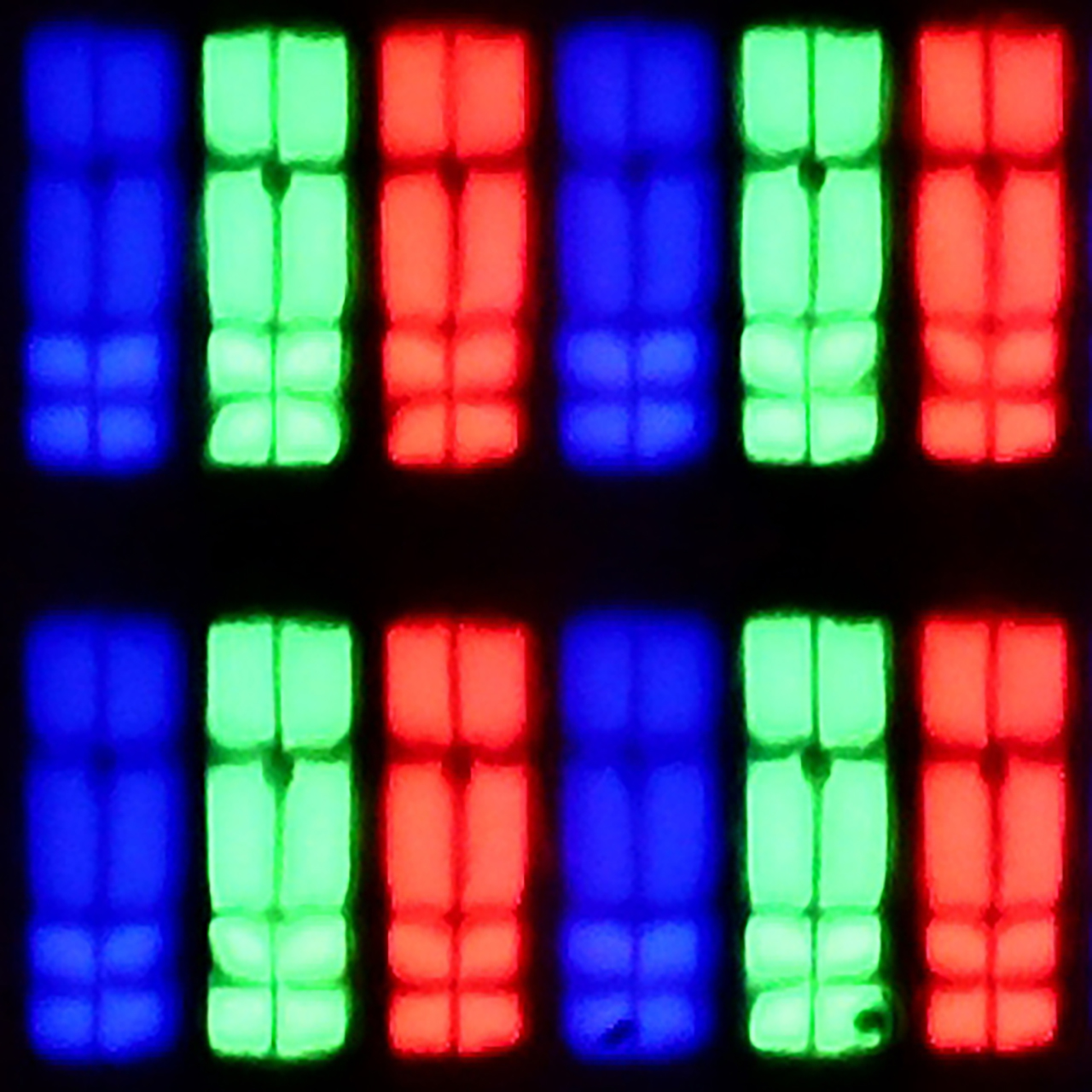

Panel uniformity and thermal imaging:

TCL C7K / QM7K
Philips OLED770
TV features
7.3/10
5.5/10
- HDMI inputs2 x HDMI 2.0, 2 x HDMI 2.1 48Gbps0 x HDMI 2.0, 4 x HDMI 2.1 48Gbps
- OutputsToslink (Optical audio), eARC (HDMI), ARC (HDMI)Toslink (Optical audio), eARC (HDMI), ARC (HDMI), Mini-Jack (Headphones)
- Network InterfacesWi-Fi 2.4GHz, Wi-Fi 5GHz, Ethernet (LAN) 100MbpsWi-Fi 2.4GHz, Wi-Fi 5GHz, Ethernet (LAN) 100Mbps
- TV receptionDVB-T, DVB-T2, DVB-S, DVB-S2, DVB-CDVB-T, DVB-T2, DVB-S, DVB-S2, DVB-C
Classic features:
- Recording to USB (terrestrial TV)
- Recording programming
- Picture in Picture (PiP)
- RF remote control (no need to aim at the screen)
- Backlit remote control
- Teletext
- Audio only mode
- Bluetooth headphones support
- Simultaneous Bluetooth headphones & TV audio
Smart features:
- AirPlay
- Screen mirroring (Windows Miracast)
- Voice search
- Voice search in native language
- Ability to connect a keyboard and mouse
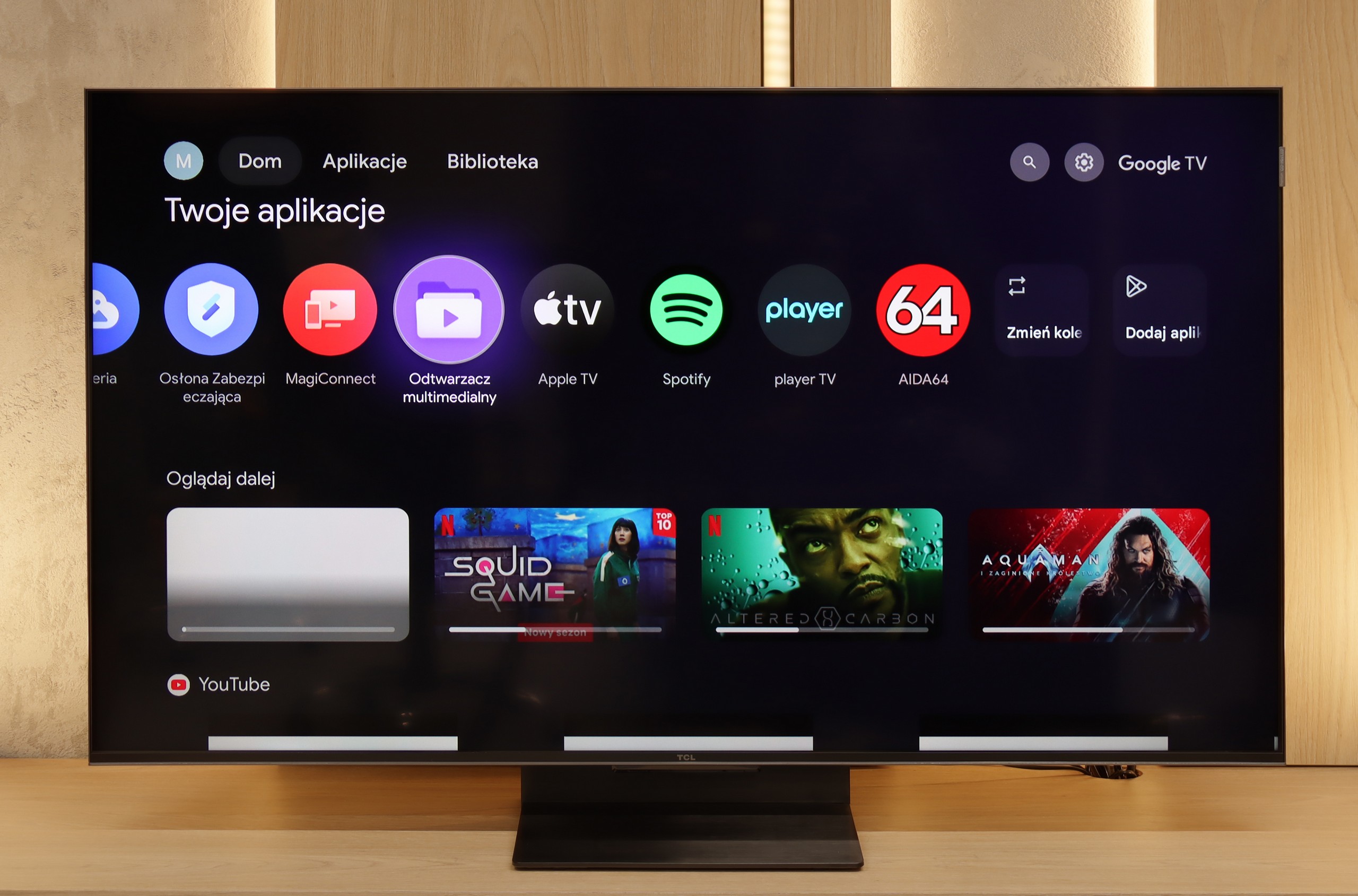
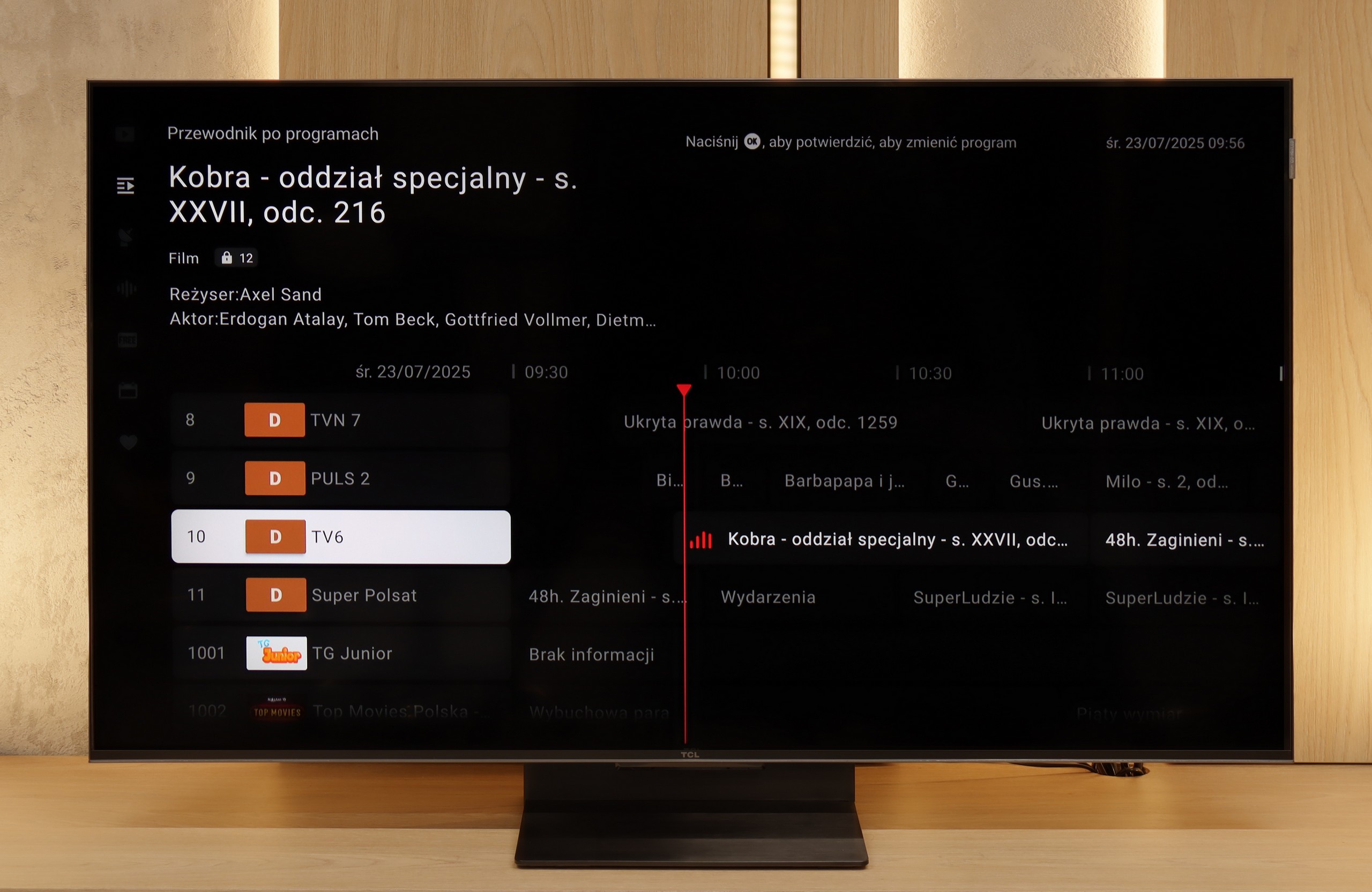
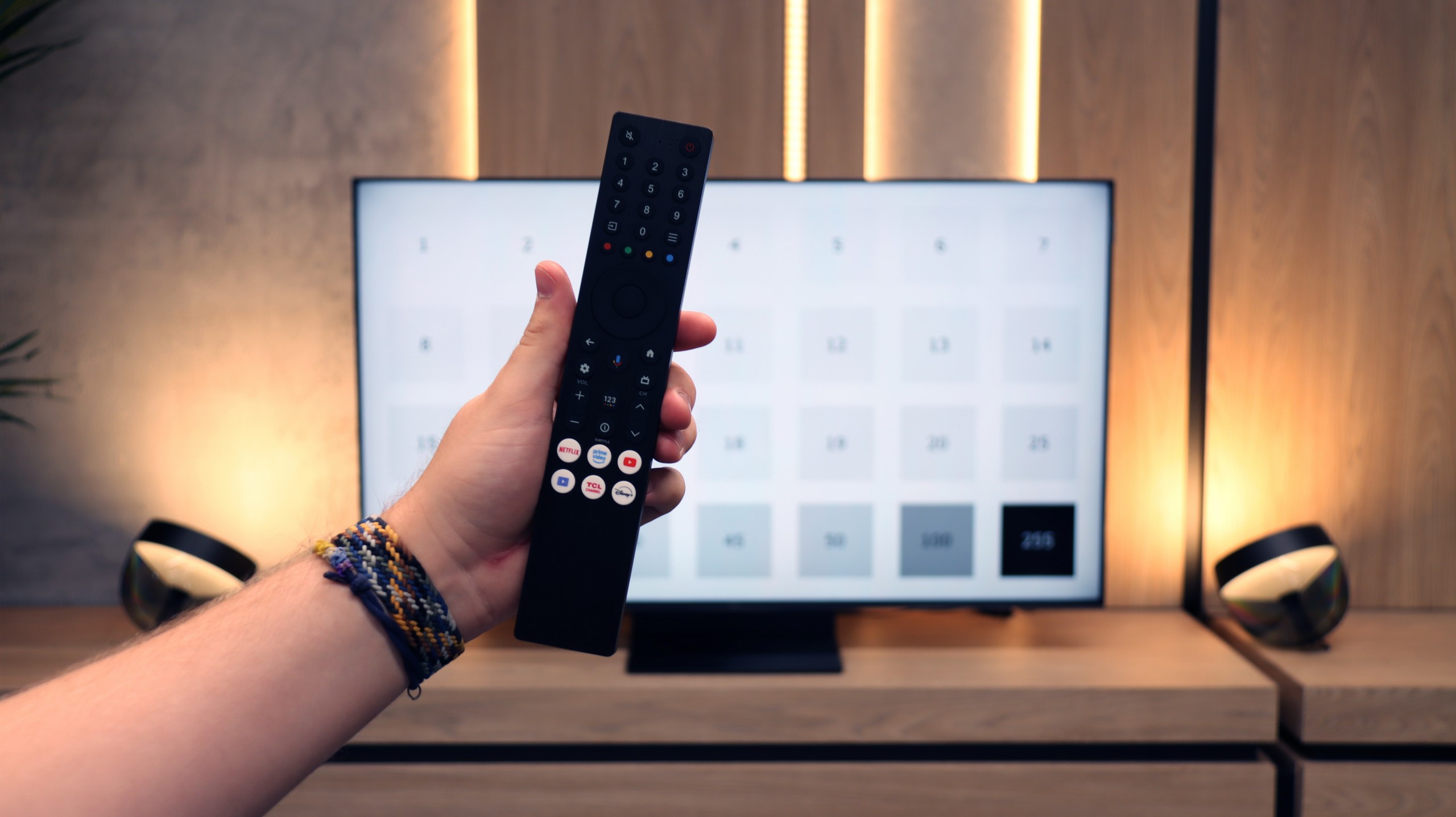
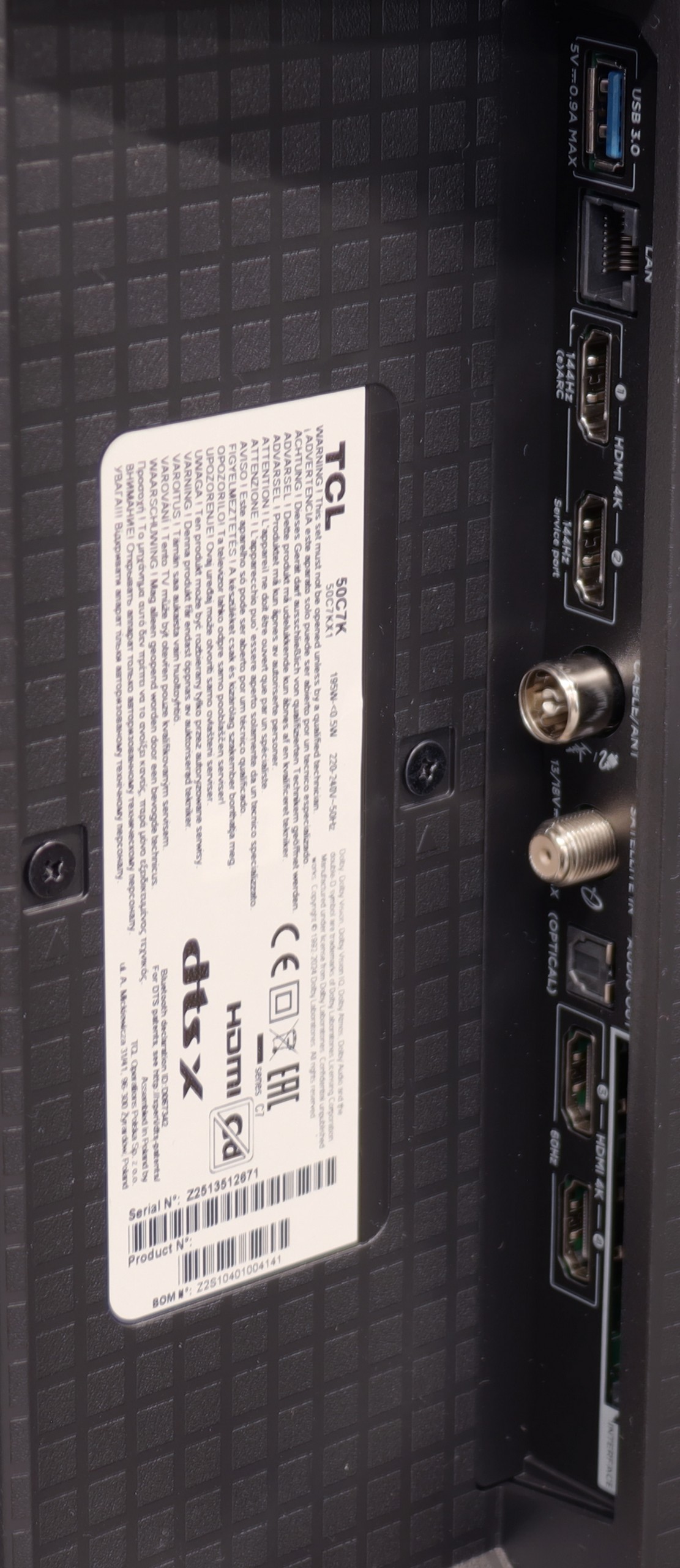




SmartTV: GoogleTV
The biggest strength of the TCL C7K in everyday use is undoubtedly the Google TV system. It is thanks to this that we have access to an almost endless library of applications, including some more niche ones that are often unavailable on other platforms. The built-in Google Assistant understands Polish, so we can easily ask what is on TV, what the weather is like, and even give a few voice commands to control the television. The presence of Chromecast and AirPlay, which work smoothly and make life easier, is also a plus.
Usability Features
However, the traditional functions are a bit lacking. Of course, we have the basics – teletext, EPG, or the ability to connect headphones – but that’s pretty much where it ends. There's a lack of USB recording features or picture-in-picture (PiP) mode, which can still be found among competitors. It's also worth remembering that Google TV in the TCL version sometimes has strangely translated menu sections or minor interface errors. These aren’t issues that hinder daily use, but detail-oriented individuals may notice them.
Functional Features
Let's start with the basics, which are the classic functions of a television. The Philips OLED770 doesn’t turn the table here; we have a standard EPG interface, the ability to connect devices via Bluetooth, and a few simple configuration options including teletext. Interestingly, there is a jack connection, which is becoming quite rare these days. However, those with older receivers or wired headphones will appreciate it. The remote creates a good impression – it’s ergonomic and has a backlit numeric keypad – but there’s also a sense of a step back here. It works via infrared, so you have to aim it at the television, and frankly, by 2025 we would expect full wireless support. The exception is voice commands, which use Bluetooth, but even here there’s no reason for euphoria.
SmartTV Features – TitanOS
Speaking of voice, let’s move on to the Smart TV system, which is an element that largely defines the daily comfort of using a television today. And here the OLED770 clearly lags behind the competition. TitanOS operates quickly enough that it's not a disaster, but daily use can be frustrating due to minor bugs and shortcomings. Theoretically, we get support for AirPlay, but on the other hand, screen mirroring just didn’t work at all in practice. Voice search? Yes, but only through Amazon Alexa and without support for the Polish language. In other words, the features are there, but when we try to use them, we find that their practicality is severely limited and nearly useless. And it’s this Smart TV aspect that becomes the greatest hindrance of the OLED770. The image can be astonishing, gaming is excellent, and Ambilight creates a unique atmosphere – but when we transition to daily use of apps and services, we feel a sense of dissatisfaction.
Ambilight – Philips OLED770
Although in terms of smart functionality, the Philips OLED770 is rather average, it has something in store that its competitors honestly envy. We’re talking about the three-sided Ambilight system, which has been a hallmark of this brand’s televisions for years. The LED lights positioned at the back of the housing dynamically illuminate the wall in colours matched to whatever is happening on the screen at that moment. The effect is simple but very suggestive – the image seems to extend beyond the boundaries of the television, giving us the impression that the screen has suddenly grown by extra inches. During a movie screening, it can create atmosphere, in games it enhances immersion, and during regular TV viewing, it simply pleases the eye. It’s this addition that makes it so that despite the limitations of TitanOS, the OLED770 has something that can attract attention and give it character.
Playing files from USB
9.2/10
8.5/10
Supported photo formats:
Maximum photo resolution:
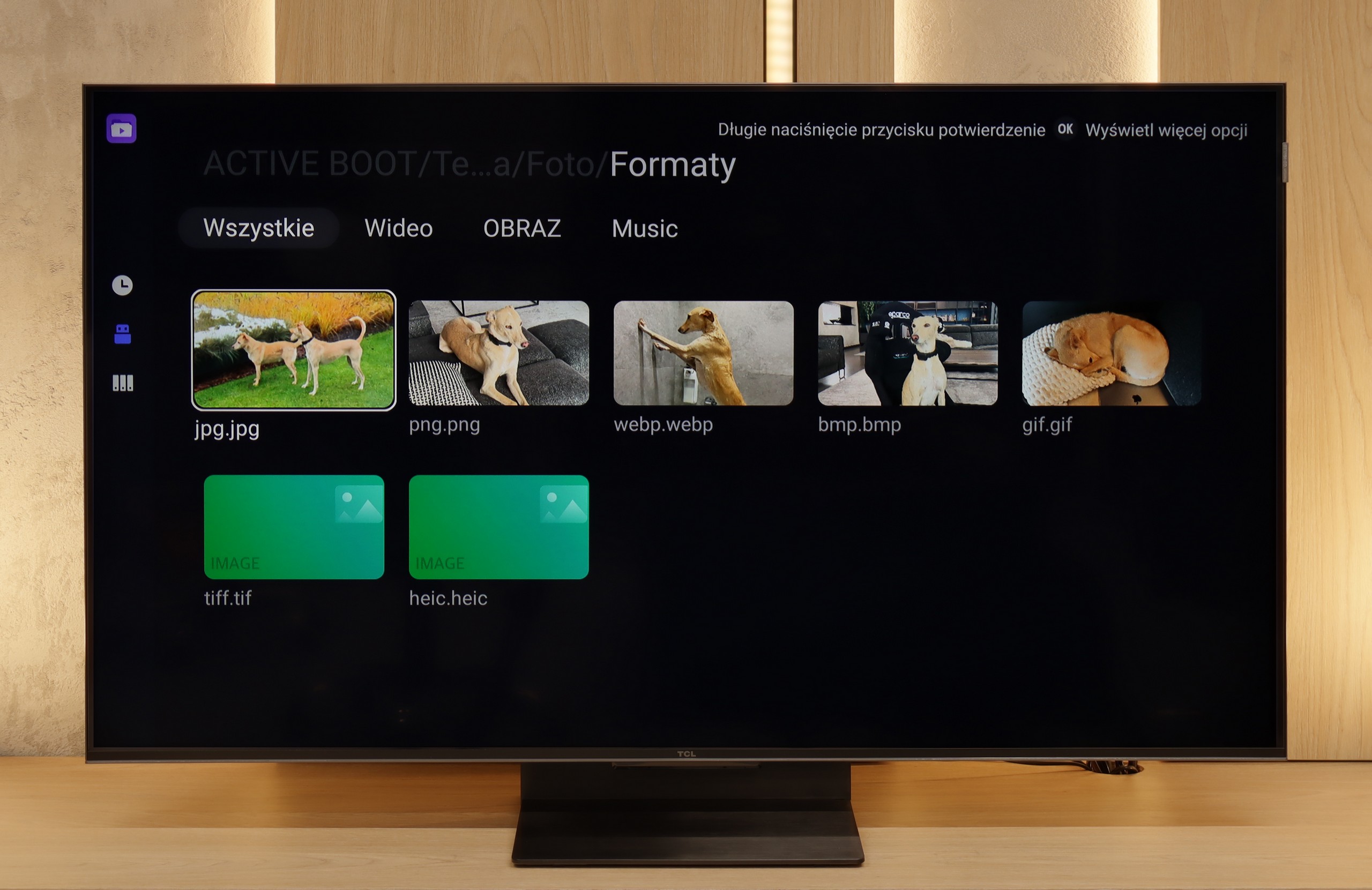

The built-in file player in the TCL C7K performs really well. It supports most popular audio and video formats, so if we want to quickly plug in something from a USB drive and get it going – there shouldn't be any problem. Of course, as is often the case, you can find some minor shortcomings – not every exotic codec will work (Apple's HEIC), not all subtitles will be perfectly synchronised (txt.). However, the biggest advantage of this television comes to the rescue, which is Google TV. With access to the Google Play Store, we can easily install an alternative player, such as VLC, and then no files will frighten us.
The built-in media player in the Philips OLED770 works quite well, especially when it comes to subtitles – virtually every format we threw at it was handled correctly, which will certainly please those watching films from their own library. However, there are certain reservations regarding photo support. Not all resolutions are recognised, which may surprise users accustomed to viewing photographs from traditional cameras or older memory cards. Apart from that, everything works correctly – it’s just worth ensuring that the TV can handle the files that we actually want to play on it.
Apps
9.6/10
6.7/10














































Sound
7/10
7/10
- Maximum volume76dB80dB
- Dolby Digital Plus 7.1
- Dolby True HD 7.1
- Dolby Atmos in Dolby Digital Plus (JOC)
- Dolby Atmos in Dolby True HD
- DTS:X in DTS-HD MA
- DTS-HD Master Audio
To be honest, we didn't expect much from the sound of the 50-inch version of the C7K model. Usually, in such sizes, it's hard to find anything more than thin, flat sound. But here – a pleasant surprise. The sound turned out to be really enjoyable, with good clarity and even a subtly noticeable bass. This is probably linked to TCL's new collaboration with the Bang & Olufsen brand, which is a novelty for 2025. Whether the C7K actually contains original drivers from the Danish premium brand – we can't confirm that. But the end result still deserves a thumbs up. For a TV without a soundbar – it sounds quite nice.
When it comes to sound, the Philips OLED770 performs quite well, although you can't expect powerful bass. For regular TV viewing, streaming services or series, its capabilities are more than sufficient – dialogues are clear, and the overall tonal balance is at a decent level. However, when we want to feel a real punch in cinematic productions or games, it quickly becomes apparent that it lacks solid low-end response. In such a situation, a natural complement becomes an additional soundbar or audio system that will allow you to take advantage of the potential of the excellent picture.
On the plus side, versatility in handling formats must be noted. The OLED770 can manage practically all popular codecs, including Dolby Atmos, DTS:X, and Dolby TrueHD. Because of this, when connecting external audio equipment, you can expect a full sound experience, even if the built-in speakers in the TV don't make a spectacular impression.
Acoustic Measurements
76dBC (Max)
75dBC
80dBC (Max)
75dBC


